Developments
- Details
- Written by: Quintus Potgieter
In the field of civil and structural engineering, urban stormwater management is a complex and challenging issue. As cities continue to grow, so does the number of impermeable surfaces — those that do not allow water to infiltrate the ground. From concrete sidewalks to parking lots, excess stormwater runoff from these structures can have serious adverse side effects on the surrounding ecosystem.
In more regional areas, rain can soak into the ground to be absorbed and released by plants. By contrast, when rain hits water-resistant surfaces in urban areas, it causes runoff, and water begins to collect sediment, bacteria, oils, metals, and other known pollutants. It has long been a civil engineers' tradition to direct stormwater into nearby systems to be treated at wastewater facilities or discharged directly into waterways.

However, as cities expand, significant precipitation events are having a higher chance of overwhelming stormwater systems. Scientists are warning that the effects of global warming may cause more rain to fall in one storm than an entire year prior. This means that countries with aging or poorly designed infrastructure are falling behind in their ability to manage runoff.
For example, Mumbai, India, has experienced its wettest monsoon season in more than 61 years. Torrential rains halted city life as many establishments, transport links and homes were submerged in waters waist deep. The coronavirus crisis impacted drain cleaning throughout the city, worsening the effects of devastating floods across the city.
An important legal consideration for most construction projects is to ensure that the final build won’t worsen downstream flooding for a particular area. On the stormwater front of a project, the engineers need to look out for that when runoff does occur, the interventions help:
- Reduce erosion
- Minimize pollution
- Prevent flooding
More water diverting infrastructure is necessary to achieve less flooding and mitigate the amount of water overwhelming a drainage system. One method of stormwater management would be to increase water infiltration through the inclusion of permeable surfaces. This approach would allow stormwater to still reach soil while reducing runoff from urban infrastructure.
Topmix Permeable is a fast draining concrete pavement solution that rapidly directs stormwater off streets, parking surfaces, driveways and walkways. This efficient approach to stormwater management would help reduce environment impacts, costs and maintenance efforts. Topmix Permeable’s video of their innovative pavement recently went viral online.
Topmix Permeable’s video, while impressive, saw them receiving critique. The concern among some of the online civil engineering community was that sediment buildup would occur rapidly if stormwater and other elements filtered in below the road surface at such speed. They caution that pavement as permeable as Topmix Permeable would require a lot of maintenance, and expert level drainage - making it tough to implement in roadways.
Nonetheless, all permeable pavements should have stone reservoirs below the surface. The stone reservoir is another fine art the engineer must perfect to create effective permeable pavements. The stone reservoir is generally made of uniformly sized stones that create enough gaps underneath the porous surface. It then temporarily stores water when precipitation is occurring and then slowly moves it off. Nevertheless, Topmix Permeable does look like an intriguing development in pavement that could lessen the chance of flash flooding for cities.
The company says their permeable pavement can provide relief to aging stormwater infrastructure inside the cities. Permeable pavement is still considered a new and developing avenue of the civil engineering world. It is to see much more attention as stormwater drainage continues to make headlines due to added precipitation. If some form of it is to be implemented on roadways in the future, it would require careful design features and construction techniques.
Civil engineers will be keeping an eye on the development of permeable pavement. It may appear at their next project build. Several configurations of how to implement permeable pavement are becoming known as engineers try an assortment of different styles. If these kinds of porous pavements can limit the number of floods worldwide, more and more civil engineers will be looking to lay them at their next project.
Prepare for the future of road construction with EIT’s Professional Certificate of Competency in Fundamentals of Road Construction.
Works Cited
Matchar, Emily. “This Concrete Can Absorb a Flood.” Smithsonian.com, Smithsonian Institution, 5 Oct. 2015, www.smithsonianmag.com/innovation/concrete-can-absorb-flood-180956830/.
“Mumbai Records Decade's Highest 24-Hour October Rain, 2nd Highest Monthly Rain in 10 Years.” Hindustan Times, 15 Oct. 2020, www.hindustantimes.com/mumbai-news/mumbai-records-decade-s-highest-24-hour-october-rain-2nd-highest-monthly-rain-in-10-years/story-5DGtX98zNszUW9jkdXMEWK.html.
- Details
- Written by: Quintus Potgieter
The industrial facility or smart-factory of the future is, in fact, here today. Automated processes ensure efficiency, and round-the-clock monitoring promises ongoing operations. However, not a lot of consideration is given to the crucial sensors in an industrial set up that makes this possible. Industrial sensors are the smaller but omnipresent element within those industrial facilities and factories, monitoring the entire ecosystem of an industrial operation and making sure those processes continue without a hitch. As sensor networks are brought online and form part of the Internet of Things (IoT) future, keeping them online is imperative. Industrial sensors typically run off of lithium-ion batteries and inevitably need replacing. A new startup is innovating in the space and taking the battery out of the equation altogether.
Smart factories and other industrial operations face replacement costs since sensor batteries eventually deplete. Some sensor batteries can last for up to a year before they need to be replaced.
However, a startup named Everactive says they have the answer to eliminating battery requirements that modern-day IoT sensors have. They are launching a self-powering sensor without a battery that can last up to 20 years.
How does the sensor work?
The sensors have come a long way since their inception. The initial concepts were bouncing around inside the minds of the two future co-founders of Everactive who were attending the Massachusetts Institute of Technology. David Wentzloff and Benton Calhoun focused their academic careers on low-power technologies. The former on low-power digital circuits and memory, while the latter focused on low power radios. Their combined skills have given birth to their new sensor — the Eversensor.
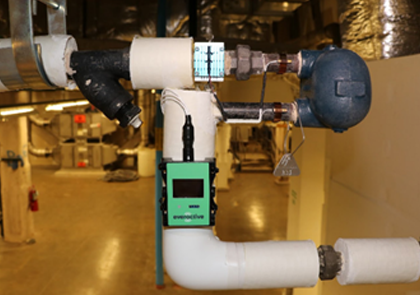
“It’s all enabled by the ultra-low-power chips that support continuous monitoring. Because our source of power is unlimited, we’re not making trade-offs like keeping radios off or doing something else [limiting] to save battery life,” Everactive Co-Chief Technology Officer David Wentzloff said.
Everactive says the ultra-low-power integrated circuits harvest energy from indoor light and vibrations. There is also an outdoor self-powered sensor available that can utilize small collar cells to power the sensors. The Eversensors can be fixed to key infrastructure in industrial operations and can sense when those machines stop functioning. The sensors do this by measuring temperature, acceleration, vibration, pressure, and more.
Everactive says the sensor meets all of the sensing, processing, and wireless capabilities that any battery-powered sensor does. Process optimization and reduced maintenance cost of both the sensors and industrial machinery are just some of the benefits of sensors working around the clock.
“Removing the need for batteries solves one of the key limitations of the IoT and represents a fundamental paradigm shift, allowing our customers to deploy wireless sensors at scale and gain access to new, high-value data-driven insights,” Bob Nunn, the CEO of Everactive, said.
The company is boasting the world’s lowest power radios and are deploying them for some of the biggest industrial companies in the world. With batteryless technologies generating much interest in the world of industrial engineering, more battery-intensive technologies could see new opportunities in a plethora of industries.
Works Cited
“Industrial IoT - Batteryless Sensors Data Analytics.” Everactive, 31 July 2020, everactive.com/.
Zach Winn | MIT News Office. “The Factory of the Future, Batteries Not Included.” MIT News, 20 Aug. 2020, news.mit.edu/2020/everactive-sensors-0820.
- Details
- Written by: Quintus Potgieter
An electricity startup company in New Zealand says they are working toward a launch of a world-first wireless energy transmission system they assert will be opening up the world's access to power. They reportedly will be using tele-energy technology to enable long-range wireless energy transmission that is safe, reliable, and cost-effective. Echoing the work of inventor Nikola Tesla, the company hopes to democratize access to electricity. If the company succeeds in rolling out the technology, it could usher in a new era of electrical engineering.
Nikola Tesla, who famously engineered the alternating current system toward the end of his life, was attempting to engineer a system where electricity could be transmitted to single antennas in consumers' homes. In turn, he hoped the wireless energy would power entire households and give everyone in the world access to electricity — the attempts at figuring out the technology led to the creation of the Tesla coil. Tesla, in the 1890s, managed to light a bulb across a distance of two miles using a Tesla coil.

Since then, wireless electrical transmission has been an elusive technology that no single company has been able to implement at a level that consumers could benefit from. However, a government-backed startup in New Zealand seems to have picked up where Tesla's work left off. Emrod, the startup in question, says they have developed a safe method for wirelessly transmitting electric power across long distances.
The technology utilizes electromagnetic waves to transmit energy wirelessly over vast distances. New Zealand's second-largest electricity distribution company, Powerco, will be first in line to test the new Emrod technology.
Tech entrepreneur Greg Kushnir spearheaded the technology. Surprised by how little development of wireless electricity technology was being worked on in the industry, he set out to recruit scientists and engineers from a company named Callaghan Innovation.
"We have an abundance of clean hydro, solar, and wind energy available around the world but there are costly challenges that come with delivering that energy using traditional methods, for example, offshore wind farms or the Cook Strait here in New Zealand requiring underwater cables which are expensive to install and maintain," said Kushnir.
"I wanted to come up with a solution to move all that clean energy around from where it's abundant to where it's needed in a cost-effective, eco-friendly way. Energy generation and storage methods have progressed tremendously over the last century, but energy transmission has remained virtually unchanged since Edison, Siemens, and Westinghouse first introduced electric networks based on copper wires 150 years ago."
How it all works
The company has patents pending for its technology, so the more proprietary technology the company is using is mostly under wraps for the time being. However, they do say they are working in frequency ranges in the ISM (Industrial, Scientific, and Medical) band - which are typically used in WiFi, Bluetooth, and RFID.
The prototype point-to-point transmission system Emrod engineered, along with Callaghan Innovation, impressed Kiwi government funders. To further demystify the tech the startup is working on, Kushnir spoke to New Atlas.
"Transferring energy with microwaves has been around for decades. In the 70s, NASA showed it could support a helicopter drone in the air, charging it with microwaves from the ground. It's been around for a while. What's changed in the last few years is mostly metamaterials technology. New materials that allowed us to convert the energy back into electricity very, very efficiently. That was what made it viable for commercial use. Before that, it's been around, but mostly used for military purposes," he said.
IT is the proprietary beam shaping, metamaterials, and rectenna technology that Emrod is keeping under wraps for now.
Kushnir goes on to say, "Electromagnetic metamaterials can absorb electromagnetic radiation and turn it into heat, or electricity, or make it go away. It's essentially stealth technology, that's what it's been used for in the military."
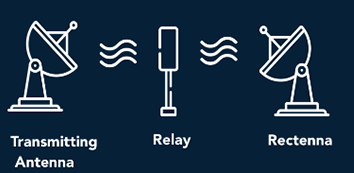
The startup assures critics that their system will produce no waves, no radiation, and no environmental impact. They have been testing their tech, sending 'a few watts' between two points spaced 130 feet from each other. The startup ultimately has faith that they are on the right track:
"The statistics are pretty compelling. We are talking about a potential 50 percent increase in sustainable energy uptake, up to 85 percent reduction in outages and up to 65 percent reduction in electricity infrastructure costs due to the Emrod solution," Kushnir concluded.
The startup wants people to imagine the possibilities when power can be accessed anywhere. The startup hopes this technology can finally power rural communities who don't have much access to electricity. If they get wireless electricity for consumers right, the startup might be hailed as one of those that managed to achieve what Nikola Tesla dreamt of over a hundred years ago.
Works Cited
"Press Release: NZ Start-up Launches World-First Long Range Wireless Power Transmission." Emrod Energy, 2 Aug. 2020, emrod.energy/press-release-nz-start-up-launches-world-first-long-range-wireless-power-transmission/.
silvae/Depositphotos, and Emrod. "New Zealand's Wireless Power Transmission: Your Questions Answered." New Atlas, 4 Aug. 2020, newatlas.com/energy/wireless-power-transmission-emrod-interview/.
- Details
- Written by: Quintus Potgieter
How do engineers move something as heavy as decommissioned offshore oil rigs? How about moving two at the same time? Oil and gas rigs can weigh up to 50,000 tons, far outweighing what tugboats are capable of moving. Transporting monumental cargo out at sea is complex work that requires complex vessels to do the heavy-lifting. The engineering solution lies in semi-submersible ships. A marvel of engineering, semi-submersible ships go about solving the conundrum of heavy cargo transportation amid battling the elements and the unpredictability of the ocean. Engineers can appreciate the incredible engineering that goes into these vital players in the marine engineering world.
A company formed in 2014 named GPO specializes in Semi-Submersible Heavy Lift Vessels. The vessels have been described as part-cargo ship and part-submarine. One of the four submersibles they have engineered is named the Amethyst. These kind of ships help with the transportation of:
- Jack-up drilling rigs
- Semi-submersible drilling rigs
- Dredging equipment
- Cranes
- Barges
- Other floating cargo
- Offshore & onshore modules
How a semi-submersible works
The Amethyst, and its twenty-six-man crew, when dispatched to load heavy cargo, have to first consult the meteorologists to determine if the weather will be conducive to heavy cargo lift. Once the crew is happy, they embark on their journey, battling winds out at sea on their way to pick up their target.
Once the ship reaches its destination, the semi-submersible performs the operation that gives it its name. The vessel is partially sunk into the ocean.
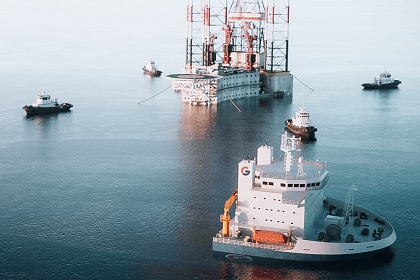
The Amethyst is one of the biggest of its kind in the world. The entire ship’s hull, at multiple levels, is lined with ballast tanks. The hull is split into 76 ballast tanks, distributed in three layers within the ship. These tanks take sea water in and weigh the ship down, submerging it in the water. 160,000 cubic yards (49 Olympic swimming pools) of water is pumped into the hull, in a very precisely engineered way to prevent the capsizing of the ship. At this point, the ship is at serious risk of sinking. Two towers at the stern of the ship, with empty ballast tanks, help keep the vessel afloat. Each tower holds ballast tanks that weigh 3,370 tons. Equally as important is the bow section that keeps the ship horizontal and not tipping.
Heavy lifting, heavy power
Loading the cargo onto the deck is the next part in the operation. The key to submersibles is the flatness of the deck that takes on the incredible weight of its cargo. The Amethyst's deck is six hundred feet long and one hundred eighty feet wide. The thickness of the steel, whilst some might think needs to be majorly thick to support immense weight, is actually the opposite. They are in fact super-strong, ultra-flat decks. The first deck is, in fact, only one inch thick. Underneath the first deck, however, lies a second deck with steel in the shape of I-beams. The force of the cargo the ship is lifting pushes down on the thinner top deck, with the second latticed I-beam deck absorbing the rest of the weight.
The cargo load needs to be balanced perfectly to ensure that the deck does not cripple underneath the immense weight of whatever is being transported. For something as big as an oil rig, three tugboats need to pull and position the rig over the sunken submersible ship. To lift the semi-submersible ship back up out of the water, with the cargo carefully balanced, the ship has to eject the water from its flooded ballast tanks back into the ocean. Pumps with high-speed impeller blades use centrifugal force to eject the water from the ballast tanks.The pumps can fully empty in 7 hours. Before that, however, engineers have to ensure the final position of the cargo they are transporting, and have to be millimeter accurate, otherwise the semi-submersible will be damaged. Once the semi-submersible is up out of the water, the ship can journey onwards.
The Amethyst has an incredibly powerful propulsion system. Diesel is the fuel source of choice. Each engine weighs 132 tonnes. Each of the four Diesel engines push out an impressive 9,600 horsepower. The ship can do one full round-world trip with full tanks.
The engines untypically reside under the bridge and in the bow - the only place where they could go in a vessel that partially sinks. The engines’ power feeds into electric generators that push electricity through cables to electric motors at the back of the ship and, in turn, powers the propellers. The 18-feet tall propellers are specifically designed to efficiently cut through water. The high-tech propellers can also reverse course immediately to bring the mammoth ship to a halt in only 500 yards of stopping distance.
Moving extremely heavy cargo out at sea was once an engineering challenge. The arrival of the semi-submersible to maneuver below heavy floating cargo and move it, was an engineering solution. The GPO Amethyst as seen above is capable of moving two decommissioned oil rigs each weighing north of 13,000 tons. What was once impossible, has now become possible, thanks to engineering. Encouragingly, instead of leaving decommissioned oil rigs out at sea, an engineering solution can ensure they are returned onshore and be disposed of in the right ways.
Works Cited
“Fleet.” GPO Heavylift, www.gpo-heavylift.com/fleet/.
“Watch Superstructures Engineering Marvels Season 1 Episode 2 on Disney Hotstar VIP.” Disney Hotstar, www.hotstar.com/in/tv/superstructures-engineering-marvels/s-2203/ultimate-cargo-ship/1000237821.,
- Details
- Written by: Quintus Potgieter
Australia is well-known for its beautiful beaches, with over one million tourists making their way to the beach each year. From national surf competitions to school swimming lessons, Australian beach culture is a huge part of the country’s national identity.
However, there is one significant challenge that comes with enjoying over 20,000 kilometers of coastline, and that is patrolling it. Due to not only its size but also the sheer amount of potential dangers lurking beneath the waters surface, keeping Australia’s majestic coastlines safe is a logistical nightmare.
But a world-first in drone technology may be the potential solution.
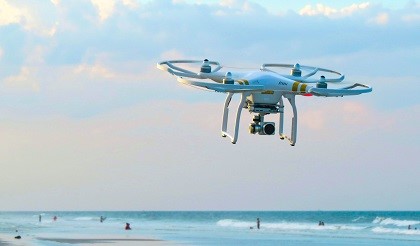
Founded in 2015, Australian company ‘The Ripper Group’ develops search and rescue drones that can monitor beaches and deploy emergency care packages to people in need. With features including being able to alert lifeguards to people who need saving to being able to spot incoming predators, their drones are already being used across the country to help keep Australian beaches safe.
Sponsored by Westpac, the ‘The Little Ripper Lifesaver’ project represents the future in shoreline safety, being able to identity and respond to incidents beyond the human eye. In January of 2018, the lifesaving drone rescued two teenage boys off the coast of Lennox Head in New South Wales. Controlled by lifesavers onshore, the drone was able to be sent to the boys with an inflatable rescue pod attached.
John Barilaro, the state's deputy premier, praised the rescue as historic. "Never before has a drone fitted with a flotation device been used to rescue swimmers like this," he said.
However, The Little Ripper Lifesaver doesn’t only save struggling swimmers. The groundbreaking drones are now equipped with an Artificial Intelligence based system that can detect a variety of marine threats such as sharks and crocodiles. With a proven accuracy of 90%, the drones can identify possible threats and relay this information to emergency services, beach lifeguards and endangered swimmers.
“This is a great example of how an AI application can help humans, as it has significantly higher rates of visual accuracy in shark detection than people. The drone will certainly help us to improve detection rates and to maintain safer conditions for those in the water,” says Dr Nabin Sharma from the UTS Centre for Artificial Intelligence.
Anyone who wishes to fly a surf lifesaving drone is simply required to do a two-day course, making it easy for surf lifesavers across the country to get involved in the program. This lifesaving combination of AI technology and mechanical engineering is a leading example of how technology can unlock opportunities in supposedly unrelated fields, enhancing the human experience as well as unlocking new job opportunities.
Currently, the drones are also being used in partnership with Chinese UAV giant DJI to help combat COVID-19. The drones can assist in two key areas, being aerial spray disinfection and crowd control.
“Through environmentally friendly active disinfectant agents we can neutralize the Coronavirus in public places on surfaces in places like playgrounds, malls, public gyms, public transport areas, sporting arenas, schools, universities, hospitals, child-care centers, aged-care facilities, shopping centers, supermarkets, factories and warehouses,” said CEO of The Ripper Group, Ben Trollope.
Mr. Trollope also explained how the drone could help authorities in dispersing crowds to further enforce social distancing conditions.
“Using drones protects the lifeguards and police by allowing safe social distancing and does the job quickly and efficiently. This will protect first responders and front-line personnel,” he said.
Works Cited
Ballantyne, Kreisha. “Drones Watch over Beaches.” Flight Safety Australia, 10 Feb. 2020, www.flightsafetyaustralia.com/2020/02/drones-watch-over-beaches/.
Spires, Josh, et al. “Drones to Fly above Australia's Beaches This Summer.” DroneDJ, 7 Feb. 2020, dronedj.com/2020/02/07/drones-fly-above-australia-beaches-summer/.
- Details
- Written by: Quintus Potgieter
The threat of the coronavirus pandemic has sent most of the world into lockdown. As a result, many of us are relying on the Internet to stay connected. As schools and workplaces continue to encourage working from home, an increasing amount of sensitive and personal data is making its way online, meaning now is the time to make sure both you and your computer are keeping safe.
Due to the high Internet usage across the globe, Internet hackers are increasingly able to exploit networks during this time of crisis. Ranging from spreading false information online to sending fake pandemic warnings directly to your inbox, scammers and hackers are embracing a whole new toolbox of possibilities.

Multinational cybersecurity and anti-virus provider Kaspersky, recently reported that on 12 March 2020, Australia saw 248,864 network attacks or data breaches. This is an increase of 284% when compared to just four days earlier on 8 March, where 64,690 attacks were reported.
With digital communications now more important than ever for the continuation of company operations across the globe, hackers are ready to see what network breaches they can exact on the unsuspecting digital public.
Key websites that inform the public have already become a focus. Worldometers.info — which many people use for updates on coronavirus statistics — was hit with what the owners of the site called a ‘malicious act.’
The US Department of Health and Human Services website was also a target of a denial of service attack. Thus, information the public depended on was momentarily disrupted. Social engineering cyber-attacks are occurring too. Email malware was recently being sent around disguised as important information on COVID-19 from official health agencies. Unsuspecting people opened what they thought was useful information regarding the coronavirus pandemic and instead had their personal data stolen.
Hackers are on the lookout to see how they can profit off of a crisis and swindle companies and people out of their data. And it is clear to see that they will try every avenue — no matter how big or how small — to try and garner some profits out of this crisis and sow societal discord.
How to fight back and how to help
The World Economic Forum has a good 3-step system to ensure you stay safe online during this time. Algirde Pipikaite, a Project Lead in Governance and Policy at the WEF, and Nicholas Davis, a Visiting Professor in Cybersecurity at the UCL Department of Science, Technology, Engineering and Public Policy write:
1. Step up your cyber hygiene standards: Check that you have a long, complex router password for your home wifi and that system firewalls are active on your router. Ensure you’re not reusing passwords across the web (a password manager is a great investment) and use a reliable VPN for internet access wherever possible.
2. Be extra vigilant on verification: Be far more careful than usual when installing software and giving out personal information. Don’t click on links from email. When signing up to new services, verify the source of every URL and ensure the programmes or apps you install are the original versions from a trusted source. Digital viruses spread much like physical ones; your potential mistakes online could very well contaminate others in your organization, an address book or the wider community.
Organizations are encouraging their workers to activate two-factor authentication on their work systems that they are logging into from home. This forces a user to put their password in, and give a second layer of authentication before being let in to their employers’ system. This gives a company peace of mind, knowing that no bad actors are logging into their systems and stealing any data - especially while many are working from home.
3. Just as you pay attention to trusted sources of data on the spread and impact of COVID-19, be sure to update your system software and applications regularly to patch any weaknesses that may be exploited. If at any stage you feel that the advice you’re being given sounds bizarre - whether the virus threat is offline or digital - search the Internet to see whether others have similar concerns and look for a well-known site that can help verify the legitimacy of the information.
Seemingly, the world’s preparedness for real viruses and digital viruses is being tested during this coronavirus pandemic. The lessons learned during this time will put the world of engineering in good stead in the future. The protection of key resources and infrastructure underpinned by developed cybersecurity strategy will now forever be of vital importance.
Works Cited
“Live Coronavirus Updates: US and Global News on COVID-19.” NBCNews.com, NBCUniversal News Group, 26 March. 2020, www.nbcnews.com/health/health-news/live-blog/coronavirus-updates-senate-white-house-reach-deal-2-trillion-stimulus-n1169196/ncrd1169696#liveBlogHeader.
Pipikaite, Algirde, et al. “Coronavirus Pandemic: Why Cybersecurity Matters.” World Economic Forum, www.weforum.org/agenda/2020/03/coronavirus-pandemic-cybersecurity/.
- Details
- Written by: Quintus Potgieter
Transformative technologies demand flexibility in the modern era. Consumers demand that technologies be smaller, thinner, wearable, fireproof, bendable, etcetera. On top of all that, the battery still needs to hold a charge.
In Busan, South Korea, a company named Jenax has been hard at work at revolutionizing the lithium-ion battery. They are ensuring a battery can scrunch, bend, flex, and more. The battery is called the J-Flex. And it looks like this:

Jenax says they have batteries as small as 0.5 millimeters that could power sensors, with their biggest battery being a 200mm by 200mm battery. The company says after 1,000 charge-discharge cycles, the cells retain 90% of their capacity.
Creating ultra-flexible batteries that can twist and turn increases the chances of flammability. Lithium-ion batteries are prevalent in many of the technologies that we plug-in to charge every day. Most notably, our smartphones, smartwatches, and tablets.
Jenax has created a non-flammable liquid electrolyte solution for their batteries. Lithium-ion batteries are well known to suffer from a phenomenon known as thermal runaway once the battery gets too hot. The company has 100 patents related to its flexible battery technology. Jenax is keeping mum on how they achieve their level of flexibility, and rightly so, due to the market heating up.
Director of Jenax, EJ Shin, said in a statement, “Liquid is the best conductor for ionic movement, which means it delivers the best battery performance. But because liquid can also be a tremendous fire hazard, many manufacturers try to use solid state electrolyte instead. They sacrifice efficiency and in the case of wearables, comfort and usability, for safety. Jenax has always been focused on delivering the greatest combination of safety and performance. With this non-flammable electrolyte - we’re taking both to the next level - providing peace of mind manufacturers and consumers need with the high performance they deserve.”
Here is a safety test that demonstrates how other lithium-ion batteries fair when undergoing stress tests:
The company says their battery can be used to revolutionize the following battery-powered technologies:
IT wearables
- Smart Watch
- Smart Glasses
- Headset
Health
- Fitness Band
- Medical Device
Fashion
- Smart apparel
- Accessories
Military
- GPS Tracker
- Military Helmet
- Wearable Robot
The company recently showcased their flexible batteries at the Consumer Electronics Show which took place in Las Vegas from Tuesday the 7th of January to the 10th of January 2020.
Jenax showed their willingness to see their battery tech installed into other companies’ applications. They reportedly powered a sensor-lined football helmet developed by HP1 Technologies. Engineers are being called to see where they could implement the flexible batteries in their daily applications.
On the eve of their appearance at CES, EJ Shin explained, “Too many connected products fail to attract customers because they are awkward, uncomfortable, or difficult to use. Hardware designers often tell us that traditional battery limitations - including rigidity, thickness and lack of flexibility - are getting in the way. We created J-Flex specifically to help innovators overcome these challenges and meet consumers’ needs.”
Works Cited
“Jenax Announces Snack & Demo Sessions on Ultra-Flexible Batteries at CES 2020 | Markets Insider.” Business Insider, Business Insider, markets.businessinsider.com/news/stocks/jenax-announces-snack-demo-sessions-on-ultra-flexible-batteries-at-ces-2020-1028719460.
Zenopa. “Jenax Announces a Non-Flammable Liquid Electrolytes Solution.” Recruitment Within Pharmaceutical Jobs, Medical Jobs, Scientific Jobs, Tech PR Jobs, Zenopa, 3 Jan. 2020, www.zenopa.com/news/1976/jenax-announces-a-non-flammable-liquid-electrolytes-solution.
- Details
- Written by: Quintus Potgieter
Australia’s fire season has been the most damaging in living memory. The skies have been tinged red by the earth-scorching fires that have burned up about 12 million acres of land in Australia.
The bushfires, which are usually observed between October to March, have been raging since September 2019. They are the worst in the country’s history. Each state has been affected in a variety of ways, but it is New South Wales and Victoria that have been most severely hit by the fires.
As Australia picks up the pieces, while still blazing fires as temperatures soar, engineers are both assisting where they can and wondering how to prevent another disaster like this in the future. Each engineer in every engineering discipline could use their technical studies to the country’s benefit to mitigate future fire events.
Back in 2016, a Research Scientist at IBM, Anna Phan, asked the question: Can we outthink natural disasters? IBM’s artificially intelligent systems could be a potential solution to future flare-ups in the bushfire season in Australia.

On an article posted to LinkedIn, she wrote, “At IBM, our researchers are applying science and technology to tackle problems like predicting which areas and properties are most at risk of bushfires, investigating evacuation plans in hypothetical scenarios, or recommending the best evacuation route in a crisis.”
One of the elements of fire spreading that IBM had to account for as they began their research in 2016 was ember attack. Ember attack happens when burning foliage, twigs, and other flammable materials become airborne after gusts of wind. Larger fires create more embers. Therefore, Australia has seen runaway fires continue to develop.
The civil engineering implications in the aftermath of the fires could be significant. Updating building standards with future fires in mind will be imposed.
Ian Weir, Head of Landscape Architecture at the Queensland University of Technology, who is researching bushfire-affected architecture, spoke to NPR. He explained that in Australia, conventional homes that do not comply with the latest building standards are more flammable. A remedy for that has been cutting away vegetation to create buffer zones for properties. However, with embers spreading over the landscape, conventional homes catch fire in any case. Hence the need for future retrofitting and construction regulations to protect properties from fires in the future.
Newer automated technologies can play a part in prevention, mitigation, and disaster relief.
Anna Phan writes, “By using big data and analytics such as fire spread simulations and traffic modeling, IBM’s researchers have also developed an evacuation planner. This can provide answers to how long it will take to evacuate an area, the impact of road blockages and what shelters are available to help town councils and emergency services better prepare for bushfires.”
Electrical engineers will also be learning vital lessons for future disasters, as the bushfires have threatened electricity distribution. In New South Wales, the bushfires blazed through a link connecting the state’s electricity link with Victoria. Some transmission lines were reduced to rubble which led to pleas from the government to limit power consumption.
Two substations in the Snowy Mountains region were closed, causing 900MW to be lost from the grid - but impressively, electrical engineers managed to keep the lights on thanks to emergency backup sources of power. However, there were some regions, specifically from South Nowra to Moruya, Tumbarumba, and others where power was non-existent due to the ravaging fires.
The crisis is ongoing and will be remembered for years to come. However, the resiliency of the Australian firefighters during this crisis will be most remembered. The world will continue to celebrate them. Their job is not yet complete as they continue to battle fires, which are expected to continue burning. Moreover, the heroic stories of everyday Australians’ survival will number in the thousands after the dust has settled on these bushfires, and each deserves an equal measure of attention.
Works Cited
Hersher, Rebecca. “Australian Fires Prompt Questions About Protecting Houses From Embers.” NPR, NPR, 7 Jan. 2020, www.npr.org/2020/01/07/793991736/australian-fires-prompt-questions-about-protecting-houses-from-embers.
PhanFollowResearch, Anna, and Anna PhanResearch. “Can We Outthink Natural Disasters?” LinkedIn, www.linkedin.com/pulse/can-we-outthink-natural-disasters-anna-phan/.
- Details
- Written by: Quintus Potgieter
“With global developments characterized by higher demand for transportation, increasingly congested roads, and major environmental challenges, the industry needs to provide transport solutions that are safer, have a lower environmental impact, and are more efficient.”
Those were the words of the Volvo Group, the Swedish multinational manufacturing company, in their recent media statement. Volvo busies itself with the production and distribution of automobiles, trucks, buses, and construction equipment. Naturally, their equipment finds its way into the mining sector. This means that their aim of creating safer transport solutions trickles into mining as well.
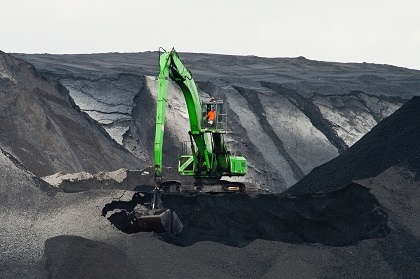
They are manufacturing in a rapidly transforming world, effecting change in the mining industry and warping the traditional practices of the industry at large. To meet the demands of safety and efficiency in mining, Volvo has announced a new automated solutions business area - aptly named Volvo Autonomous Solutions - that will hit the ground running in 2020. The new business area will continue to develop automation solutions for their products. Volvo Group write:
“Autonomous transport solutions, based on self-driving and connectivity technologies, are well-suited for applications where there is a need to move large volumes of goods and material on predefined routes, in repetitive flows. In such situations, autonomous transport solutions can create value for customers by contributing to improved flexibility, delivery precision, and productivity.”
Australia (and China) - leading the charge on automation
Mining operations globally have not yet fully assimilated into automating many of their services, but in countries like Australia, automation in the mining sector is quickly becoming the norm. Australian owned Resolute Mining is one of those companies automating many of their operations, and exporting the methodologies to mines they own around the world. They are famously automating their Syama mine in Mali, West Africa. It is expected to hold the title of the world’s first fully automated gold mine.
In their published financial results, Resolute Mining reported that they were nearing commercial production rates after their rollout of a network of automated technologies within the Syama mine.
“This represents the initial delivery of one of the main benefits of automation, the ability to maintain production over periods when operations would normally cease in a typical manual mine. This network enables the automated haulage loop, automated rehandle level, mine digitization and production automation, all of which allows operators to monitor and control mine production in real-time.”
Resolute Mining says that the workforce that would have been spending their days inside the mine can now spend their time upskilling and training themselves for new roles within the company - they do not intend to chip away at the workforce in Africa, but rather empower it. The menial drillers' job may be a thing of the past in the future of the mining industry, but the remote controller jobs are now open season.
Rio Tinto, an Anglo-Australian mining giant, has also made a considerable investment into automated mining equipment. In four of their iron ore mines in Australia, 73 driverless trucks are working around the clock, 24 hours a day. The command center that gives those driverless trucks the instructions they require to function lies 750 miles away in Perth, where employees of Rio Tinto keep an eye on all of the operations from afar. These are the remote control engineers of the mines, and they are a shining example of what automation has achieved thus far.
For other mining operations, however, the remote controller engineer job is not an open position yet, because the mining company has not gotten out in front of the digital disruption occurring in the sector. ReportLinker.com’s report on the Automated Mining Equipment Market, China has been dominating in the mechanization of their mines trumping the world average, but still remaining sluggish when compared to their own standards.
It seems that the fourth industrial revolution’s moderately fast march may be keeping engineers in their traditional roles in some emerging markets for now, but the Internet of Things technologies are rapidly transforming the industry and is expected to creep into most countries in the future. Interconnected and autonomous mining equipment seems unavoidable at this point, and the message to mining companies is clear: adapt or die.
Works Cited
FR, ReportLinker. “The Automated Mining Equipment Market Is Expected to Grow at a CAGR of 7.21%.” GlobeNewswire News Room, "GlobeNewswire", 11 Oct. 2019, www.globenewswire.com/news-release/2019/10/11/1928488/0/en/The-Automated-Mining-Equipment-Market-is-expected-to-grow-at-a-CAGR-of-7-21.html.
“Resolute Mining Starting to Deliver Automation Benefits at Syama Underground.” International Mining, 30 July 2019, im-mining.com/2019/07/30/resolute-mining-starting-deliver-automation-benefits-syama-underground/.
“Volvo Builds out Automation Offering on Industry Demand.” International Mining, 21 Oct. 2019, im-mining.com/2019/10/21/volvo-builds-automation-offering-industry-demand/.
- Details
- Written by: Quintus Potgieter
Engineers are the driving force behind the digital revolution. In just the last decade, there has been a rise in automation technologies that have turned menial tasks at almost every level of society into an automated process.
Emerson, a global technology and engineering leader, is designing automation solutions for engineers that they believe could propel the industry forward and increase efficiency. Emerson serves up automation solutions for a broad spectrum of engineering disciplines, including Automotive, Chemical, Industrial Energy & Onsite Utilities, Oil & Gas, Mining, Power Generation and Water & Wastewater.
Their latest solution to engineering efficiency is a set of new digital, cloud-based tools that can help individual engineers stay on top of their projects. The MyEmerson engineering tools promise to save engineers time and allow them to work on the things that matter.

For instance, the online tool repository has on-demand CAD drawings and diagrams, plus configurators that can help engineers quickly create CAD drawings for the operations they need. Emerson says CAD drawings only take 15 minutes to be uploaded to their database, whereas it typically takes four hours to get CAD drawings to a user database in traditional engineering fields.
For engineers that work with gas, liquid, and steam, the MyEmerson application has a flow solutions technology advisor that can assist with measurements and provides configuration assistance for flow technologies specific to an engineer’s needs.
The online toolkit has various calculators, including:
- Power Module Life Estimator
- Appleton Lighting Retrofit Calculator
- Wireless Cost Savings Estimator
- ASCO Conversion Calculator (Metric/Imperial)
- Wireless Gateway Capacity Estimator
- ASCO Numacalc Pneumatic System Design Calculator
The application can assist with finding information on how to configure instrumentation found in the field — which purportedly helps engineers set instrumentation up at 93% faster than traditional methods. There is even a live chat that engineers can utilize to ask questions and get rapid answers from an online expert.
Emerson’s website states, “The process of specifying devices is often complex. From seasoned engineers to those new to the industry, it can be difficult to specify solutions for a range of applications.
“MyEmerson engineering tools allow you to confidently design solutions, regardless of your level of expertise. With these tools, you can quickly create a valid configuration, accurately select a device, generate required documentation, or calculate ROI. Use digital engineering tools to save time and augment your own expertise - to confidently engineer the best solution.”
The future of web apps for engineers
There are several web applications that engineers can utilize in their day-to-day operations to make their jobs easier. Doing back-of-the-envelope calculations and simulating engineering scenarios on the cloud before carrying them out in reality, is extremely popular with engineers.
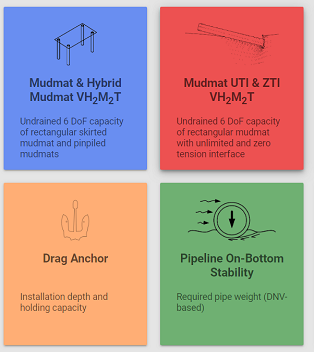
One website that hosts loads of engineering calculations useful for civil and structural, and mechanical engineers is webappsforengineers.com.
For those wading into the machine learning and big data sectors of the engineering industry, MATLAB Online is a useful tool. MATLAB is used for analysing data, developing machine learning algorithms and creating models and applications. With no installation necessary, and just a standard browser required, engineers can access a lightweight online app that can help them efficiently develop algorithms of the future.
Another engineering website that lists the top fifty free web apps for engineers is EngineeringDegrees.org. They lay the categories out according to; CAD Software, Calculators, Odds and Ends, Productivity, and Engineering Tools Overload. This new way of seeking out digital tools that help engineers calculate and simulate is changing the way they do their jobs.
Cloud synchronization for engineers within companies, and general web apps and digital tools that can assist engineers in their work are rapidly being rolled out to produce more efficiency in all industries. We can expect to see more online resources and smartphone apps that make the action of remote and on-site engineering much more complex and efficient.
Works Cited
“Engineering Tools.” Emerson US, www.emerson.com/en-us/automation/digital/engineering-tools.
“MATLAB Online.” MATLAB & Simulink, uk.mathworks.com/products/matlab-online.html#no-downloads-or-installations.
- Details
- Written by: Quintus Potgieter
Engineers are collaborating on a project to strengthen energy storage technologies through the use of 3D printers. This project is also highlighting the importance of 3D printing in electrical engineering.
Researchers at the University of Manchester have developed a unique way to convert 2D materials into electrodes that can be stored in devices such as supercapacitors. This requires turning a clay-like substance known as MXene into an ink, which once dried, can conduct electricity.
In 2011, engineers from Drexel University in the United States created MXene. It consists of carbon atoms and transition metals. This substance has two properties which make it particularly useful; it is hydrophilic, which means it can be turned into an ink, and it is conducive for electricity. This means it is more suitable for energy storage than other 2D clays.
MXene has been derived from graphene, the world’s first 2D material which was a better conductor than copper, but one million times thinner than human hair, stronger than steel, transparent, and flexible. The discovery of graphene opened the door for scientists to experiment by creating other 2D inks, each with differing properties.
However, to make effective use of these properties, the inks need to be integrated into devices and structures.
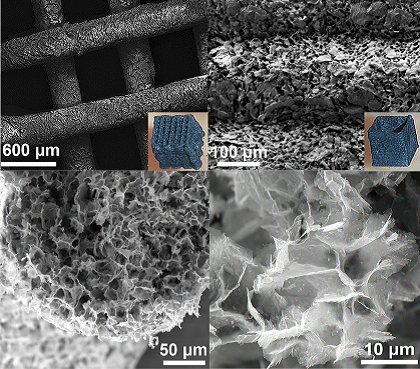
Drexel College of Engineering Professor in the Department of Materials Science and Engineering, Dr Yury Gogotsisaid, “so far only limited success has been achieved with conductive inks in both fine-resolution printing and high charge storage devices.
“But our findings show that all-MXene printed micro-supercapacitors, made with an advanced inkjet printer, are an order of magnitude greater than existing energy storage devices made from other conductive inks.”
University of Manchester researchers have done just that. They put MXene through their 3D printer and showed how they could make the most of the compound.
Team leader Suelen Barg said, “We demonstrate that large MXene flakes, spanning a few atoms thick, and water can be independently used to formulate inks with very specific viscoelastic behavior for printing.
“These inks can be directly 3D printed into freestanding architectures over 20 layers tall.
“Due to the excellent electrical conductivity of MXene, we can employ our inks to directly 3-D print current collector-free supercapacitors.
“The unique rheological properties combined with the sustainability of the approach open many opportunities to explore, especially in energy storage and applications requiring the functional properties of 2-D MXene in customized 3-D architectures."
University of Manchester researchers said 3D printed MXene electrodes could have significant use in supercapacitors. The supercapacitors could store power and weigh less than what is already in energy storage devices today. In future, this could help electric vehicles, solar panel energy storage batteries, smartphones, and other electronic devices deal with electrical charges much more efficiently and expand the energy storage capabilities.
Ph.D. students from the University, Wenji and Jae, said, “additive manufacturing offers one possible method of building customized, multi-materials energy devices, demonstrating the capability to capture MXene’s potential for usage in energy applications.
“We hope this research will open avenues to fully unlock the potential of MXene for use in this field.”
EIT offers a range of electrical engineering courses - find out more!
Works Cited
Greenwood, Matthew. “Engineers Use 3D Printing to Turn 2D Materials into Electrodes.” Engineering.com, www.engineering.com/DesignerEdge/DesignerEdgeArticles/ArticleID/19430/Engineers-Use-3D-Printing-to-Turn-2D-Materials-into-Electrodes.aspx.
- Details
- Written by: Quintus Potgieter
Offshore wind turbines have continued to face a glaring problem ever since their conception: their maintenance being a dangerous endeavor any engineer involved.
A number of occupational health and safety measures must be put in place to protect these engineers, which ultimately means more money needs to be spent by the companies building the turbines.
When turbine blades require maintenance, engineers are tethered to the wind turbine by ropes, they then walk out on the turbine and access the blades. This is naturally a highly dangerous operation. For the energy company, the downtime of a turbine is also a costly exercise.
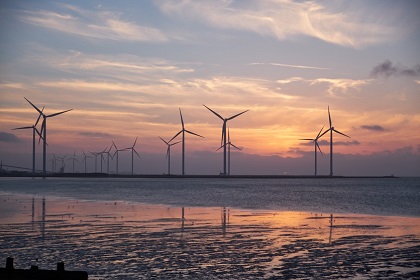
However, automation is beginning to creep into the industry to save both lives and save money. The world’s first autonomous robotic inspection and repair solution for offshore wind farms has been announced and the numbers are looking positive. The pilot project is to cost roughly $7 million dollars and is expected to help cut costs of the wind farm by nearly $50 million dollars throughout its lifetime.
It’s called the MIMRee (Multi-Platform Inspection, Maintenance and Repair in Extreme Environments) project. It employs cutting edge technology to analyze wind farms like no human crew would have been able to do before.
The solution includes utilizing drones, which are deployed to analyze and scan the turbine blades. These are deployed off an autonomous vessel that scans the wind turbines on approach. Based on the repairs needed, the drones carry robot repairers to the affected blades so they can begin the repair process.
There are also underwater robots that can be used to maintain and repair the submerged portions of the wind turbines. The robots that companies such as Innovate UK and their affiliates are considering using are named Autonomous Aquatic Inspection and Intervention (A2I2) robots.
The key objectives of the UK-funded automotive project were put together in 2018, and now engineers are working to meet them. The objectives were outlined in project notes, which were released to the public, and said the use of robots will:
- Remove the need to send humans offshore to carry out wind turbine blade IMR (Inspection, Maintenance & Repair) tasks
- Remove the need to shut wind turbines down to carry out blade inspections
- Reduce the risk of using autonomous vehicles offshore to carry out IMR tasks in real-world operating conditions.
- Establish the business case for using autonomous vehicles for blade IMR.
- Develop a roadmap for transferring the MIMRee system to other relevant industries.
Dr Sara Bernardini of Royal Holloway from the University of London told BIM+:
“We will be working closely with a group of offshore wind technicians to create personas for the robots and map the tasks that will turn a human-led mission into an autonomous operation. Testing and consultation with technicians will be crucial to designing the interface for remote monitoring and intervention and understanding how to deal with the unexpected in a mission.”
Works Cited
“Project to Develop World's First Robotic Wind Farm Repair and Inspection Solution.” BIM , www.bimplus.co.uk/news/project-aims-develop-worlds-first-robotic-wind-far/.
- Details
- Written by: Quintus Potgieter
It appears capitalism plus mechanical engineering equals food deliveries, with Uber set to deliver McDonald’s via drones in California later this year.
Uber Elevate is the department responsible for this — its focus is on developing aerial delivery and transport technologies.
According to their website, “The Uber Elevate team is working toward transforming the world through aerial ridesharing at scale. Imagine soaring above congested ground traffic. With Uber Air, this future is closer than you think. Uber is developing shared air transportation - planned for 2023 - between suburbs and cities, and ultimately within cities.”

However, the department has faced some setbacks. They predicted that they would have a ridesharing service ready to go by 2021, but at this stage, the commercial release won’t be until at least 2023.
Despite this, they have already begun implementing these technologies in collaboration with the Uber Eats side of the business. The company was cleared by the Federal Aviation Administration (FAA) in San Diego to deliver food via drone technologies.
They have since announced they will deliver meals from McDonald’s and two other local restaurants in San Diego via drones.
So, how will this work? Staff at the restaurant will load the order onto an Uber Eats drone. The drone will fly the food to a staging location, where it will be collected by a courier and driven the final kilometre to the customer.
Eventually, the company plans to have the drone land on top of Uber Eats delivery cars, using an identifying QR code.
The reason behind this new endeavour is to maintain fast delivery times in dense urban environments. Uber will still be utilizing couriers for the last leg of these deliveries to negate the problems associated with home deliveries in built-up areas. According to Uber Elevate’s head of flight operations Luke Fischer, 68% of the world’s population expected to live in such areas by 2050.
“We don’t need to get drones direct to our customer, we just have to get it close,” he said.
“There have been many attempts at drone delivery: landing on mailboxes and in backyards with parachutes attached.
“But we run into the same problems with those. It simply doesn’t work in dense urban environments where people don’t have backyards, don’t have drone capable mailboxes and don’t have backyards for parachutes.”
Uber has already tested some deliveries from McDonald’s to the San Diego State University campus, using an off-the-shelf AR200 drone.
The company has now built a custom drone specifically for food delivery to be debuted later this year.
“Our goal is to expand Uber Eats drone delivery so we can provide more options to more people at the tap of a button,” said Fischer.
“We believe that Uber is uniquely positioned to take on this challenge as we’re able to leverage the Uber Eats network of restaurant partners and delivery partners as well as the aviation experience and technology of Uber Elevate.”
Works Cited
Dickey, Megan Rose, and Megan Rose Dickey. “Uber Adds Another Air Taxi Vehicle Partner to the Mix.” TechCrunch, TechCrunch, 11 June 2019, techcrunch.com/2019/06/11/uber-adds-another-air-taxi-vehicle-partner-to-the-mix/.
Rapier, Graham. “Uber Says It Will Deliver McDonald's Meals via Drones in San Diego as Soon as This Year.” Business Insider, Business Insider, 12 June 2019, www.businessinsider.com/uber-eats-drones-will-deliver-mcdonalds-in-san-diego-2019-6?IR=T.
- Details
- Written by: Quintus Potgieter
Engineers are no strangers to technological advancement. The advent of the computer has rapidly transformed the world, and engineers are constantly driving the growth of technology. Development of computers has now reached levels once thought impossible; the automation of virtually every industry perceivable.
The breakaway success of computers was observed by the co-founder of Intel Gordon Moore. He made a prediction back in 1965 that from that year onwards, the number of transistors on integrated chips inside computers would double every year. As transistors were getting smaller, he envisioned more and more being added to the internal chip.
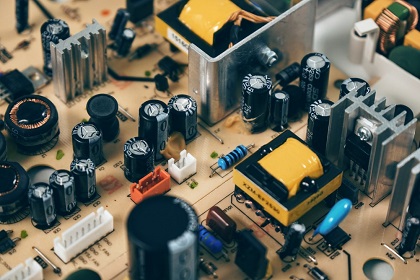
In 1975, he revised his initial prediction. The new prediction was that the transistors would continue to double and that their cost would halve every two years. This prediction became known as Moore’s Law because every two years his prediction rang true.
What Moore eventually learned was that the reality of development would far surpass what he had ever imagined. He observed incredible technological leaps from the 1960s and onwards that would make computers increasingly faster and more efficient.
Think about the smartphone — in Moore’s day that was merely a twinkle in engineer’s eyes. By the time the iPhone 6 was released to the world in 2014, the proprietary A8 chip inside the smartphone was made of up 2 billion transistors.
Fast forward to 2018, and the most premium of Apple’s iPhone X range has 10 billion transistors on its A12 chipset. As of 2017, the largest transistor count in a commercially available single-chip processor was 19.2 billion.
The issue that Intel faces in the short term is that at some point transistors might be too small to be scientifically useful. In 2019 Intel said the company could only keep shrinking the transistors for another 5 years from that year on before they would reach the dead-end. After some delays in the manufacturing process of their new chip, Intel is beginning to roll out their 10-nanometer transistor processors in the latter half of 2019.
And as the transistors get smaller, the creation of them is beginning to cost more. Intel says making the chips smaller and sticking to the two year time frame set by Moore is becoming too stringent of a deadline and is essentially causing Moore’s Law to come undone.
However, it seems that Moore’s Law is ending at a time when a quantum leap in computing is needed. With more automation being required in industries, computing is going to need a new dawn. Computers as we know them will need to change from being glorified calculators, into artificially intelligent, sentient machines.
Artificial intelligence
Engineers and scientists are hard at work putting together true artificial intelligence. Engineers are being tasked to build something that can learn, something that has its own human-like neural network.
The task is so big, novel approaches to the microprocessor are needed. Intel and others are investing over AU $18 million into startups that specialize in experimenting with the newer chip technologies that could lead to a new computing revolution. A startup named Untether AI is one of those companies. They reportedly have a new chip that can transfer data 1,000 times quicker than conventional chips that are being utilized for AI.
The opportunities that the future computers present, is becoming realized by industries in the fourth industrial revolution. And the benefit of new, novel processors will unlock a new computing future that will benefit business and humans in general. Untether AI’s focus is on their website - they write:
“Future devices will sense and make sense of the real world environment around them. They will do that by leveraging AI technology. To make that possible, processors have to handle the neural nets that make up AI with extreme efficiency. Devices that can react naturally to your spoken word and your slightest gesture are coming. To be able to accurately interpret the meaning, neural nets will run right on the device without draining your battery or overheating the device.”
Works Cited
Knight, Will. “Intel Buys into an AI Chip That Can Transfer Data 1,000 Times Faster.” MIT Technology Review, MIT Technology Review, 23 Apr. 2019,
www.technologyreview.com/f/613258/intel-buys-into-an-ai-chip-that-can-transfer-data-1000-times-faster/.
“Untether AI.” Untether AI, untether.ai/.
- Details
- Written by: Quintus Potgieter
Industrial automation technologies have been commonplace in the aerospace industry for some time. This innovation is now starting to be seen inside aircraft, and within the aircraft manufacturing industry, airports, and ground support equipment.
Aurrigo is a UK-based company developing the world’s first automated dolly. A dolly is used at most airports around the world to transport baggage and cargo. The company utilizes driverless technology and has been testing its innovations out in Britain.
It was the International Airlines Group (IAG) that asked Aurrigo to get their engineers working on automating ground equipment, in hopes that they could roll out the technology worldwide.
Utilizing their wealth of knowledge in LIDAR and GPS technology, Aurrigo went to work. After some developing and designing, the company has rolled out a prototype that is now wheeling around Terminal 5 at Heathrow Airport in London.
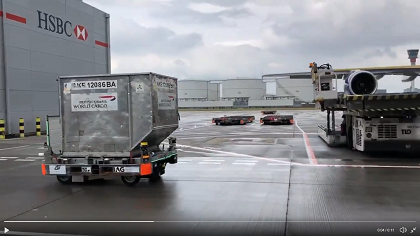
Director of Operations at Aurrigo Richard Fairchild in the official press announcement of the dolly innovation said, “Until you have seen it first-hand, it’s difficult to explain how big an operation it is moving bags around an airport.
“In Terminal 5 alone, BA operates around 900 dollies. The current method is to have one manually driven tug towing three dollies behind. It can’t move until they are all full, which means there are a lot of empty dollies waiting around.
“What IAG wanted to do was look at an alternative solution and that’s where we came in, using the knowledge gained from our hugely successful Pod Zero passenger-carrying vehicle to turn a standard dolly into a self-driving vehicle capable of moving bags from the baggage hall to the aircraft stand.”
In the Bristol area, Aurrigo is testing out the autonomous Pod Zero passenger carrier pod. The company showed what the very first implementations of driverless technologies could be — in this video they are transporting the elderly to and from.
David Keene, Chief Executive Officer of Aurrigo, about the dollies utilizing the driverless technology at Heathrow, said: “This is another fantastic example of British innovation and engineering and I’m delighted that our team has again delivered — this time for a new application.
“Our driverless pods are now in operation all around the world and the work with IAG and BA shows how similar technology can be used in a completely different industry to deliver significant results.”
In this case, industrial automation is making the entire process of transporting cargo and baggage at airports even more efficient than it was before.
For engineers, automating cargo-carrying shows that the things they design for one industry can be embedded into other industries and make a big impact. And that’s why industrial automation is a subject that all engineers should be upskilling themselves with.
Works Cited
“Aurrigo Delivers Autonomous 'Baggage' Solution for Heathrow.” Aurrigo, 25 June 2019, aurrigo.com/news/2019/06/aurrigo-delivers-autonomous-baggage-solution-for-heathrow/.
- Details
- Written by: Quintus Potgieter
The world’s first 360-degree infinity pool will be fitted into the roof of a London Skyscraper.
Those brave enough to swim will have death-defying views as they float 220 meters above the city. Designs show that the pool will feature four clear walls and a transparent floor, so visitors to the hotel below will be able to look up and see both the swimmers and the sky.
UK-based pool manufacturer Compass Pools is behind the Infinity London project. They have designed the pool to be made out of cast acrylic, rather than glass, as this material transmits light at a similar wavelength to water. The idea is that the pool will look crystal clear.

At night, it will be lit up with twinkling lights, to make the building look like a sparkling jewel-topped torch.
Those brave enough to swim atop the 55-storey building will have uninterrupted views over London. The question is; how will swimmers get in and out of the pool?
That is a feat of engineering itself, and it relies on a rotating James Bond-esque staircase beneath the pool.
“Normally a simple ladder would suffice, but we didn’t want stairs on the outside of the building or in the pool as it would spoil the view — and obviously you don’t want 600,000 litres of water draining through the building either,” said Compass Pools’ technical director Alex Kemsley.
“The solution is based on the door of a submarine, coupled with a rotating spiral staircase which rises from the pool floor when someone wants to get in or out — the absolute cutting edge of swimming pool and building design and a little bit James Bond to boot.”
This rising staircase isn’t depicted in designs, so it still remains to be seen exactly how this will work.
The company has also designed a sustainable heating system, to keep the pool at a comfortable temperature. This involves recycling waste energy from the skyscraper’s air conditioning system. The hot gas produced as a by-product of creating cold air to pump throughout the building will be run through a heat exchanger to keep the pool water warm.
The design features even more technological advancements. A Programmable Logic Controller will ensure the entire system and its sensors are working in harmony.
To assuage the fears of those who think a swimming pool atop a skyscraper is a scary idea, the company says they will fit the pool with an anemometer. This will measure wind speeds at the top of the skyscraper to ensure swimmers have a good idea of what the conditions for swimming are like.
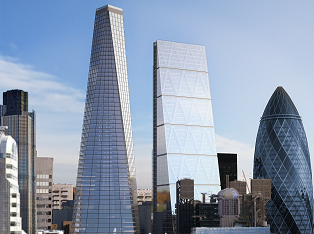
The system will also monitor the water levels and use the wind speed data to ensure water does not get displaced and splash onto the street below.
But, if you are reading this and drafting an email to your boss in hopes that you may get an infinity pool built atop your own office block, slam on the brakes. A 360-degree infinity pool is something tougher to build on already existing constructions.
“Architects often come to us to design rooftop infinity pools, but rarely do we get a say in the building design because the pool is usually an afterthought,” said Kemsley.
“But on this project, we actually started with the pool design and essentially said, ‘how do we put a building underneath this?’
“When we designed the pool, we wanted an uninterrupted view, both above and below the water.”
The location of Infinity London is yet to be determined. However, construction is expected to begin in 2020 once partners and contractors are confirmed. A five-star international hotel will occupy the top floors of the skyscraper and the pool will be used by their guests.
- Details
- Written by: Quintus Potgieter
Temperatures in Nairobi, Kenya, reach 35 degrees centigrade in the summer months. Over five hundred kilometers away is the town of Malindi, where a brand new photovoltaic solar project is kicking off. If Kenyan engineers are looking to work in renewable energy, their chance has arrived.
The Malindi project will be the first utility-scale independent power project the country will see. Globeleq is a company hailing from the United Kingdom, and is heading up the project. They are also investing in renewable energy solutions in South Africa.
The company will be selling electricity to Kenya’s national electricity provider Kenya Power, recently agreeing to a 20-year deal.
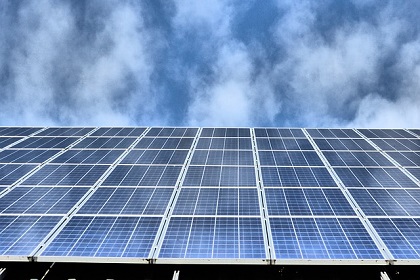
Paul Hanrahan, Globeleq’s CEO, told media:
“The attractive investment climate combined with strong local community support sets the stage for this important project as well as future investments in Kenya. We are extremely pleased to be making this investment into the Kenyan energy sector.”
The construction will be complete and in operation by mid-2020, producing up to 40 megawatts of power. The rights to the land, the environmental impact assessment and the necessary permits needed for constructing have all been procured. The project’s construction has received nearly $100 million dollars AUD in funding from investors, who will all be enjoying a cut of the eventual profit. The engineering companies behind sourcing the necessary technology and constructing the actual plant are Sterling and Wilson Solar.
Kenya, unlike many of its other neighboring countries, is opening their energy market up to whatever entities may be able to provide electricity to its people. They intend to rely less on coal powered power stations and move to more renewable sources. It is all a part of the government’s National Electrification Strategy which aims to power Kenya by completely green energy by 2020.
A recent coal power plant construction reaching completion in Kenya is undergoing scrutiny for purportedly lying about the price of the electricity that will be produced at the power plant. The plant in Lamu, Kenya, is seeing a big level of pushback after the revelations were made public. Experts are saying the entire project should be scrapped.
The Kenyan government and the World Bank set up a $67 million dollar AUD facility under a project named Kenya-Off-Grid-Solar to further develop the private solar sector, in hopes that they can bring electricity to 14 communities that have been lacking energy solutions.
Principal Secretary of the Ministry of Energy, Joseph Njoroge, said:
“The country has made great strides in achieving connectivity with access to electricity standing at 75% though both grid and off-grid options. However, access to electricity is low in the 14 marginalized counties, which represent 72% of the country’s total land area and 20% of the population.
Works Cited
“Kenya in $47m Financing to Provide Solar Solutions.” Journal Du Cameroun, 11 June 2019, www.journalducameroun.com/en/kenya-in-47m-financing-to-provide-solar-solutions/.
“Kenya: First Utility-Scale IPP Solar Project Achieves Financial Close.” ESI, 3 June 2019, www.esi-africa.com/industry-sectors/renewable-energy/kenya-first-utility-scale-ipp-solar-project-achieves-financial-close/.
- Details
- Written by: Quintus Potgieter
Triton Submarines have taken man to where no man has gone before...to the bottom of the ocean.
Businessman and amateur pilot, Victor Vescovo, went down to what is believed to be the deepest point of the ocean a human being has ever travelled to. Its name is the Challenger Deep, located in the Pacific Ocean at the southern end of the Mariana Trench. From surface to seabed the underwater marvel is 10,928 meters deep and is the deepest point in the Earth’s hydrosphere. The vessel would have to sustain pressure equal to 50 buses pushing down on it. Descending nearly 11km in April 2019, Vescovo now holds the record for the deepest ocean dive made by a human. What he found on the ocean floor will shock you.
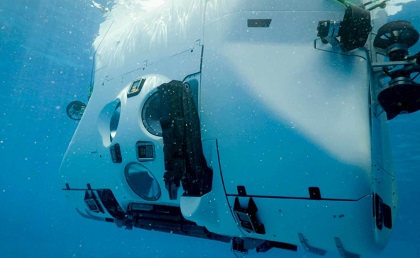
Triton has recently been working on creating prototypes of submersibles that are able to withstand incredible amounts of pressure atat significant ocean depths. And they have struck gold - or should we rather say titanium - with the Triton 36000/2 Hadal Exploration Systems. They explain how the submersible came to life on their website:
“Three years ago, an American client came to us with a dream. He had climbed the seven summits, the tallest peaks on each of the seven continents, and next he wanted to dive to the deepest point in each of the five oceans. The challenge was set. Only two manned submersibles have ever dived to full ocean depth, and each made only a single dive. Could Triton design and build a submersible capable of repeat dives to the most remote, hostile and unexplored region of our planet? The answer, a resounding “yes”.”
The company spent every weekday (and probably weekends) working on designing and engineering feasibility studies of the submersible. Then, in 2016, the last design was decided upon and a manufacturer was chosen. They were off to the races.
The submersible’s alloy would be made of titanium, and surrounding the vessel, glass-bead based ‘syntactic’ foam to allow for buoyancy. The two materials are able to withstand immense pressures - whilst making enough space for two passengers. But, what made this submersible novel was the lack of welding work required. One of these submersibles can be purchased for just US $48.7 million.
Triton eventually settled on a name: The DSV (Deep Submergence Vehicle) Limiting Factor. A fully commercially accredited full ocean depth (FOD) manned submersible. And the plan was to take it on a journey that would see it visit the bottom of all the five oceans - a mission entitled Five Deeps Expedition. He has since completed four out of five of the expeditions and is to complete his mission in the Arctic Ocean in September 2019. His entire journey has been filmed and will be made into a documentary to air on Discovery networks.
Filming the documentary also required some engineering. The team had to design cameras that could sustain the pressure down at 10,000m below sea level. Unmanned vehicles would also be sent out onto the seabed to scan the surface so it could be recreated in virtual reality - which too had to be built out of the robust materials the Triton 36000/2 was made up of.
Here is a video from Triton that shows some of the engineering work around the testing of the submersible before they took on the five oceans.
<iframe width="702" height="395" src="https://www.youtube.com/embed/bTuKBeG1bRE" frameborder="0" allow="accelerometer; autoplay; encrypted-media; gyroscope; picture-in-picture" allowfullscreen></iframe>
At the bottom of the Challenger Deep, Vescovo made a chilling discovery on the seafloor… plastic waste. After spending four hours hovering above the seafloor, he said he observed a plastic bag and sweet wrappers. Manmade waste was at the deepest levels of the ocean.
Nonetheless, the expedition is an amazing feat of engineering. Upon returning from the Challenger Deep expedition, Vescovo (talking to the BBC) said:
“It is almost indescribable how excited all of us are about achieving what we just did. The submarine and its mother ship, along with its extraordinarily talented expedition team, took marine technology to a ridiculously higher new level by diving - rapidly and repeatedly - into the deepest, harshest, area of the ocean.”
Works Cited
“Hadal Exploration System.” Triton Submarines, tritonsubs.com/hadal/.
Morelle, Rebecca. “Mariana Trench: Deepest-Ever Sub Dive Finds Plastic Bag.” BBC News, BBC, 13 May 2019, www.bbc.com/news/science-environment-48230157.
- Details
- Written by: Quintus Potgieter
Engineering is transforming Kenya into an innovative hub of new technologies that are both helping the poorest of the poor and assisting the growth of the business sector.
A startup from the Penn State College of Engineering, Kijenzi, has been training Kenyans in the art of 3D printing. The startup also helps address several key issues encountered in the rural medical facilities in Kenya.
In Kenya, clinics are being faced with many issues like outdated machinery, unrefined supply chains, and limited access to equipment they need to ensure a healthy environment for patients. On Kijenzi’s website they explain how their 3D printers work:
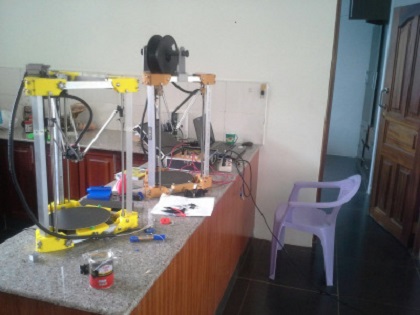
“At the most basic level, 3D printing is a form of additive manufacturing - the process of adding material to a product. The printers used by MK take computer-generated 3D models and, with a series of programs, translate the models into a form readable by the printer. With this formatted file, the printer can then use fused deposition modelling (laying down many thin layers of material, in this case plastic filament) to actualize the model. With this process, a huge variety of products can be generated, printed in many materials, and from infinite designs.”
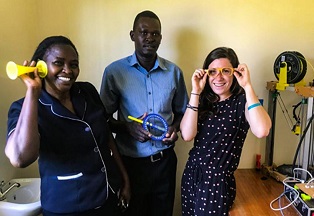
The useful element of Kijenzi’s 3D printers is that it can use a versatile PLA plastic filament. This certain type of filament can be made up of recycled plastics as well. Thus, collected and recycled plastic in Kenya could make up filaments that can be changed into new products by 3D printers in the country.
The printer itself is put together by Kijenzi, and is fabricated out of affordable but durable materials. The printer can produce “simple knobs and brackets needed for maintaining appliances and machinery to unique application medical items”, Kijenzi says. It can also print frames for bifocals, hearing apparatuses and more.
Entrepreneurship & Business
Hobbyists have taken up 3D printing globally, but entrepreneurs have also started opening their doors to the public offering to print items customers want as well. A 3D printing service in Nairobi named Objet Kenya is a 3D printing service provider showing Kenyans what is possible in the 3D printing industry.
Farai Mashambanhaka, who worked with Objet Kenya, wrote in 3DPrint.com:
“There are several other companies offering 3D printing services in Kenya and the country has a great entrepreneurial and innovative spirit. This has made 3D printing a very sensible and lovable technology and if there is something that fires it all: it is the Kenyan will provide homegrown solutions.”
Another 3D printing service provider in Kenya is Ultra Red Technologies. They print ‘customized canopies for wildlife exploration vehicles’. They are also printing parts for solar powered desalination devices that will provide clean, purified water for Kenyans.
Another company offering training in 3D printing for Kenyans is a place named Kenya Connect. It is a not for profit organization offering STEM classes to help Kenyans learn the basics.
Works Cited
“3D Printing.” Kijenzi, 26 June 2017, medtechkijenzi.wordpress.com/3d-printing/.
“3D Printing in Africa: Kenya & 3D Printing.” 3DPrint.Com | The Voice of 3D Printing / Additive Manufacturing, 1 May 2019, 3dprint.com/242729/3d-printing-in-africa-kenya-3d-printing/.
- Details
- Written by: Quintus Potgieter
Google I/O has kicked off in Mountain View, California. A keynote speech opened the conference, which will see software and hardware developers from all over the world descend on Silicon Valley to watch and learn how Google do what they do.
Google CEO Sundar Pichai kicked the proceedings off by outlining Google’s Mission, which is to “organize the world’s information and make it universally accessible and useful”. They continued on to announce a plethora of notable additions to their product lines including new smartphones, and smart home devices, but it was an addition to their search engine that raised eyebrows.
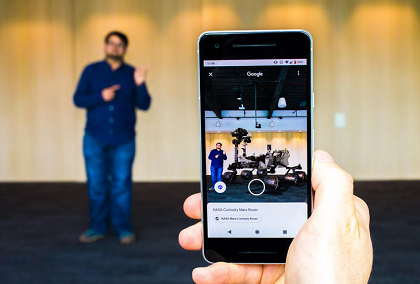
Google announced that they would be implementing augmented reality into their search engine through what is known as Google Lens. Google initially launched ARCore in 2018, a platform for building augmented-reality experiences, and now they have finally shown what is possible.
At the conference, Google showed how the functionality work, but CNET has shown, in more detail, how useful the addition is:
The benefit for school children and general scholars is immediately apparent. Searching for an object and seeing it in action right in front of you while you are learning is valuable for those who are audio/visual learners.
With this new search tool, when you find an item that can be shown in augmented reality you are able to click ‘view in your space’ and a 3D model of whatever you have chosen will be projected into your camera’s field of view. The CNET video above shows what seems to be a NASA rover in augmented reality.
Thus, for prospective engineers specifically, the virtual simulation technology that Google has developed could be very beneficial to their learning. Engineers could see in 3D the technologies mentioned in their textbooks, learning its intricacies and getting an idea of what they might see in their future employment.
Google now joins the league of companies like Microsoft who are trying to bring the virtual world into the real world specifically for learning purposes.
Clay Bavor, Vice President of Virtual and Augmented Reality at Google said:
“We think, with the technologies coming together in augmented reality in particular, there’s this opportunity for Google to be vastly more helpful.”
Works Cited
Lardinois, Frederic, and Frederic Lardinois. “Google Brings Augmented Reality to Search – TechCrunch.” TechCrunch, TechCrunch, 7 May 2019, techcrunch.com/2019/05/07/google-brings-augmented-reality-to-search/.
- Details
- Written by: Quintus Potgieter
In 2017, the world got its first taste of the future of electric mobility and looked like something straight out of a science fiction film. An unmanned remote-controlled electric ‘jet’ prototype that took to the skies and experts were more than impressed. The engineers at Lilium, a Munich based startup, were providing the world a glimpse of what might one day be possible - a fully electric jet taxi.
Fast forward to 2019 and the company announced their fully electric five-seater prototype jet, flying up to impressive speeds of 300km/h. On 4 May 2019, the engineers took their new unmanned prototype out to a launch pad in Germany to test the groundbreaking vehicle. It was a successful launch.
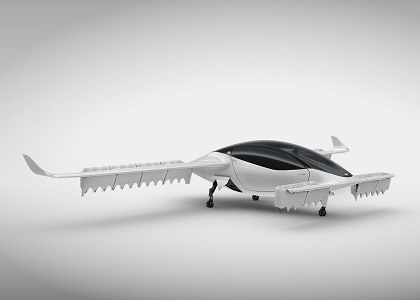
The electric jet takes off like a helicopter, going straight up without the need for a runway - making it a more accessible technology for companies wanting to purpose these aircraft. The company’s aim is to build an ‘Uber-of-the-skies’ mobility service that they intend to have operational in various cities around the world by 2025.
Co-Founder Matthias Menier said:
“This is the first time that we have a full-scale, full-weight prototype of that five-seater version. This is the next step in mobility as we perceive it. What we are trying to achieve is an air mobility revolution. We look at what is possible by the laws of physics. Our principle of maximum simplicity combined with a level of safety is really something that makes us unique.”
The Lilium jet is fitted with 36 all-electric engines on the flaps of the jet that produce minimal noise. The company says the low vibrations will mean a smooth and quiet ride for passengers, but most importantly not generate any carbon emissions. The company says they are the first electric jet engines in commercial certification.
The engineers working on the project say the fixed wing design of the aircraft only utilizes less than 10% of the maximum 2,000 horsepower the plane is capable of while cruising. The company says:
“This efficiency, which is comparable to the energy usage of an electric car over the same distance, means the aircraft would not just be capable of connection suburbs to city centers and airports to main train stations, but would also deliver affordable high-speed connection across entire regions.”
Now comes the hard part of refining the prototype and seeing if humans can actually travel inside the cabin. The company, however, do say that if they get their aircraft operational by 2025, a pilot will most likely be aboard helping fly the aircraft. But, they are not ruling out an autonomous aircraft in the future. The even harder part for the engineers and the company as a whole is getting safety approval in Europe and the USA, which the company is now in the process of doing.
Works Cited
Hawkins, Andrew J. “Electric Air Taxi Startup Lilium Completes First Test of Its New Five-Seater Aircraft.” The Verge, The Verge, 16 May 2019, www.theverge.com/2019/5/16/18625088/lilium-jet-test-flight-electric-aircraft-flying-car.
“Home.” Lilium, lilium.com/.
- Details
- Written by: Quintus Potgieter
Anglo American’s coal mining operations in Mpumalanga, South Africa, are becoming more efficient and safer. They are starting to roll out underground Wi-Fi and equipping their miners and engineers with smartphones. It’s a setup that will cost only $690,000..
Currently in South Africa, telephones are used inside mines to communicate above and below the mine, but they are not immediately available to everyone involved in the mining operation. Communications is just one of the many benefits of the new underground Wi-Fi. Miners can now send photographs and videos to fellow miners and engineers so they can troubleshoot any problems in the mine.
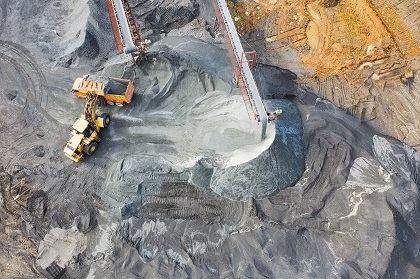
Anglo American’s Edgar Simfukwe told the media:
“We’re working in an environment where safety and productivity are paramount. The introduction of underground Wi-Fi is a game-changer. It allows our miners to communicate more easily, thereby making mines more productive. The main benefit is that breakdowns can be reported and resolved faster - in some cases, by contacting equipment manufacturers on the spot.”
Safety is another vital benefit. Miners can now be tracked throughout the mine which will also aid rescue crews if accidents happen. In the future, miners will also wear wearable technologies that can track their vitals whilst they do the heavy work - giving the mining company incredible oversight over its workforce’s wellbeing.
Once they successfully implement a communications mesh network, the company can also look into fleet management that can be automated utilizing Wi-Fi technology. This has been happening in some technologically developed mines around the world for some time now.
Automation in the mine a success?
Many mining operations around the world are creating interconnected networks of miners and mining technology through Industrial Internet of Things technologies.
In Western Australia, iron ore mining producer Fortescue Metals Group since 2012 had coupled their trucks up to an automated system that actually drives the trucks autonomously. The company calls it the Autonomous Haulage System (AHS). They are connected via a Wi-Fi system as well. In February 2019, however, a pair of the trucks collided into one another.
Since then, the technology has shown its reliability over time and avoided more accidents than it has caused. Chief Executive of Fortescue, Elizabeth Gaines, explained:
“Since the introduction of the first AHS truck at Solomon in 2012, AHS trucks have safely travelled over 24.7 million kilometres.”
Nonetheless, a preliminary investigation into the collision allegedly revealed that the trucks apparently lost Wi-Fi coverage in a certain location inside the mine. Thus, it seems, the mine’s mesh network was not properly communicating dynamically.
Anglo American is on track with their implementation of networked technologies. In 2017, they began their rollout of technologies into the mining sector. With a more than $34 million USD investment into technology like drones, remotely controlled drills and novel software, Anglo American has begun its revolutionizing of their operations.
Progress is being made in making mines all across the world with the implementation of Industrial Internet of Things technologies that are making for a safer environment for engineers and miners alike.
Works Cited
“Anglo American Heads up Underground WiFi.” ENCA, 20 May 2019, www.enca.com/news/anglo-american-heads-underground-wi-fi.
“Not so Autonomous: Wifi Outage Results in Driverless Truck Crash at Fortescue Mine.” MINING.com, 15 Feb. 2019, www.mining.com/driverless-trucks-not-flawless-two-crash-fortescue-mine-australia/.
- Details
- Written by: Quintus Potgieter
Engineers and scientists have embarked on the race of a lifetime to perfect energy efficient refrigeration technologies. At this point in time, refrigeration technologies are a large contributor to greenhouse gases due to their amount of electricity consumption.
A group of international researchers at the Chinese Academy of Sciences have reported that they have come closer to perfecting a new form of refrigeration that achieves a cooling effect utilizing crystal plastics.
Instead of compressing gas in the traditional way refrigerators do it, the researchers attempted to apply pressure to the plastic crystal. The result is a change in the molecular structure of the crystal plastics, which rapidly absorbs any heat.

Dr Bing Li, one of the researchers of the study, speaking to The New Scientist said:
“We identified plastic crystals as promising materials for solid-state refrigeration. A tiny pressure can switch the materials between the disordered state and the ordered state, resulting in a large change in energy.”
Within the crystal, the molecules compress and decompress which in turn produces a cooling effect. Dehong Yu of Australia’s Nuclear Science and Technology Organisation (ANSTO) speaking to ABC News said:
“One cycle will cause a 50-degree difference in room temperature with very little pressure. This is a perfect example of where we use our fundamental research to lead into a real thing that can benefit our everyday life.”
One of the plastic crystal compounds known as neopentyl glycol reportedly has an ‘energy change tens of times greater than other potential solid refrigerants’. The compound can absorb much more heat than solid coolants at the same pressure.
The researchers are calling it ‘atomic refrigeration’ and it could make its way into range of other consumer products. It could especially be used in air conditioners.
However, there is still some innovation required with the plastic crystals. The researchers point out that some more trial and error is needed to make them more viable as a refrigerating alternative. They write:
“Nevertheless, plastic crystals are not perfect caloric materials. For instance, given their organic nature, they have relatively low melting points (typically about 300-400K) which is not desirable for refrigeration applications. In addition, the properties that make plastic crystal highly deformable mean that these materials lack the mechanical resilience to endure many refrigeration cycles.”
Thus, the crystal in its current form still requires some further development before it replaces traditional cooling methods. This is where traditional refrigerators have an upper hand; gases can be cycled without end and determination.
However once plastic crystals has been perfected, cooling technologies could microchip-sized. It is now up to the engineers and scientists to figure out how to ensure multiple cooling cycles and scale the technologies appropriately.
Works Cited
Cazorla, Claudio. “Refrigeration Based on Plastic Crystals.” Nature News, Nature Publishing Group, 27 Mar. 2019, www.nature.com/articles/d41586-019-00974-5.
Lu, Donna. “Fridges Made from Plastic Crystals Could Help Cut Carbon Emissions.” New Scientist, www.newscientist.com/article/2197805-fridges-made-from-plastic-crystals-could-help-cut-carbon-emissions/.
Weule, Genelle. “Your Fridge Is Bad for the Environment. Here's What Could Someday Replace It.” ABC News, Australian Broadcasting Corporation, 28 Mar. 2019, www.abc.net.au/news/science/2019-03-28/plastic-crystals-could-keep-us-and-the-planet-cool-in-the-future/10943796.
- Details
- Written by: Quintus Potgieter
There are two schools of thought when people see a back flipping robot. Some - and they’re probably engineers - find it absolutely awe inspiring. And some have overtly negative reactions and feel a little creeped out by it.
Nonetheless, engineers at the Massachusetts Institute of Technology (MIT) Biomimetic Robotics Laboratory have designed a robot that can backflip on demand. It is called the Mini Cheetah. The engineers proclaim the robot is ‘powerful, robust, and inexpensive’ and it is indeed quite the marvel.
The robot is fast; it can run at up to 2.45 meters a second. It is also incredibly responsive to human interaction. In the video the engineers released, they are pictured toying with the robot and putting it through a plethora of ‘stress tests’. They are seen kicking it around, shoving it, and throwing it from a height to the ground. In all their tests, the robot reacts and centers itself - returning itself to its initial stance.
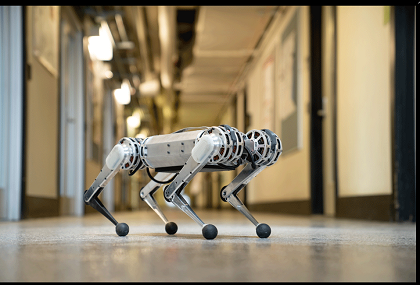
Needless to say, there has been a large level of trial and error to get the robot actually doing the things the engineers hoped it would be capable of.
With its nimble abilities and impressive prowess, the robot is able to quickly adapt to whatever environment surrounds it. The question next is: What could these robots be used for in the future?
The robot is fast; it can run at up to 2.45 meters a second. It is also incredibly responsive to human interaction. In the video the engineers released, they are pictured toying with the robot and putting it through a plethora of ‘stress tests’. They are seen kicking it around, shoving it, and throwing it from a height to the ground. In all their tests, the robot reacts and centers itself - returning itself to its initial stance.
Needless to say, there has been a large level of trial and error to get the robot actually doing the things the engineers hoped it would be capable of.
With its nimble abilities and impressive prowess, the robot is able to quickly adapt to whatever environment surrounds it. The question next is: What could these robots be used for in the future?
Showing it off and shipping it out
The group of mechanical engineers behind the Mini Cheetah have been experimenting with the design and producing other iterations of the robot. The team went to the MARS Conference two weeks ago. The conference is headed up by Amazon boss Jeff Bezos.
Lead developer of the Cheetah robots, Benjamin Katz, told media:
“A big part of why we built this robot is that it makes it so easy to experiment and just try crazy things, because the robot is super robust and doesn’t break easily.”
At the conference they showed off their bigger iteration of their Cheetah robots, the Cheetah 3. The engineers are prepping ten Cheetah robots and are lending their technology to research labs that can continue building on what they have already engineered.
The engineers are proud to tout that their robot is the first four-legged robot in the world that can do a complete 360 degree backflip. The first robot to do so was Boston Dynamics’ Atlas robot. Where all of this mechanical engineering experimentation might land up? Nobody seems to know. For now, it is undeniably cool.
Works Cited
“MIT's Mini Cheetah Robot Can Do Backflips.” Interesting Engineering, interestingengineering.com/video/watch-mits-mini-cheetah-robot-do-backflips.
- Details
- Written by: Quintus Potgieter
The CEO of Tesla, Elon Musk, has been left questioning media bias after fallout coverage of a Tesla Model S electric vehicle that caught fire in a Shanghai car park.
The released CCTV footage shows a white Tesla sedan emitting smoke from either side of the car, and then suddenly bursting into flames. The video shows how quickly, as a result of the fitted lithium-ion batteries, the car burns.
Bloomberg recently reported that there were over 40 fire-related incidents with new-energy vehicles in 2018 alone. New-energy vehicles include purely lithium-ion vehicles, hybrid plug-ins, and fuel-cell vehicles.
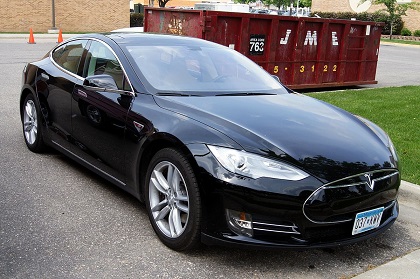
Elon Musk took to Twitter to express his disdain over what he believes is severely one-sided coverage of the latest Model S fire. In three separate tweets, he tweeted:
“Over a million combustion engine (it’s right there in the name!) car fires per year & thousands of deaths, but one Tesla car fire with no injuries gets biggest headlines. Why the double standard? This is a real question.”
“Reality is a Tesla, like most electric cars, is over 500% *less* likely to catch fire than combustion engine cars, which carry massive amounts of highly flammable fuel. Why is this never mentioned?”
“When you read double standard articles about Tesla, please ask why. Maybe there’s a good reason that isn’t obvious.”
Musk is no stranger to gluts of media coverage of Tesla vehicles that have gone up in flames. In March 2018, a Tesla Model X’s autopilot feature caused the car to crash into a median barrier on Highway 101 in Mountain View, California. The car burst into flames with onlookers reporting that the flames were emanating specifically from the battery bank.
In December 2018, a Tesla owner’s vehicle threw up a few errors relating to tire pressure on the highway. The owner had his vehicle towed to a local auto repair place. Soon after, the battery bank caught fire. Firefighters were called to the scene and battled the blaze.
Firefighters reported that they put the blaze out and then monitored the car for another six hours. Once they had left, the car’s battery bank caught fire again. Tesla has now opened a hotline for first responders with specialists who will guide firefighters on how to put Tesla fires out.
Nonetheless, Tesla says that gasoline powered vehicles are eleven times more likely to combust than electric vehicles. They are hoping that the number may reassure the public who are being persuaded against purchasing electric vehicles by their highly publicized fires.
The National Fire Protection Association is the official body that generates the statistics of fire incidents in the United States. The last time they reported on vehicles catching fire was in 2015. The Association reported that in 2015, there were 174,000 vehicle fires reported in the United States - and 99 percent of them were gasoline powered vehicles.
Musk borders on alleging that big oil and car manufacturers have money invested into mainstream media who in turn are focusing on the rare incidents of when electric vehicles catch fire, and ignoring the large number of fire incidents that combustion engines account for.
Electric vehicle fires are something that the electrical engineers at Tesla are still working on. Highly publicized incidents are anything but unfamiliar in the world of new technologies. Samsung developed smartphones that have spontaneously combusted but were able to bounce back from the scandal.
It seems new electric vehicles are just going through the same teething problems.
Works Cited
“How Does The Tesla Model S Ace Safety Tests, But Catch on Fire?” ABC News, ABC News Network, 3 Oct. 2013, abcnews.go.com/Technology/tesla-model-catch-fire/story?id=20462128.
- Details
- Written by: Quintus Potgieter
The Port of Ngqura is a deep-water port located on the east coast of South Africa, 20 kilometers north east of Port Elizabeth. Not only is it South Africa’s newest port, but it is also the only port in the country with green status. The Transnet National Ports Authority (TNPA), who owns the Port of Ngqura, says they won the ‘green’ title by perfectly mimicking nature.
Their key to success is in the way they dredge sand - among other things. Dredging 240,000 tonnes of sand per year is no easy feat and a problem any port has to tackle. However, using nature as their inspiration, engineers have figured out how to do it around the clock and in accordance with environmental standards.
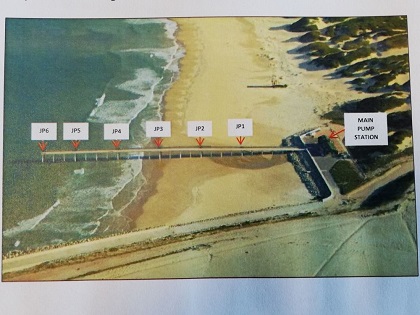
Ports have to be constantly dredged in accordance with the Convention on the Prevention of Marine Pollution by Dumping of Wastes and Other Matter 1972. There are multiple reasons for dredging in South Africa according to TNPA:
- Some of the ports have rivers running into them. These rivers bring silt into the port which compromises port depth;
- The movement of ships within the port creates high and low spots due to propulsion i.e. the ship’s propellers cause the sea bed material to move.
- The effect of Littoral drift or longshore movement of sand. This occurs primarily on the east coast of the country where the prevailing winds and currents cause a northward movement of sand, so sand flows up the coast. To counter this and to mimic the natural movement of sand, Dredging and Services creates sand-traps.
Preventing a buildup of sand and allowing ships to enter and exit the port with ease is very important work. Port operators can face a fine of R10 million ZAR ($698,200 USD) for slacking on their dredging maintenance. Luckily, the Port of Ngqura has an ace up its sleeve.
It is not only the only South African port to have green status, but it is also the first port in the world to have a fixed jet pump sand bypass system. This automated system mimics the way in which sand naturally drifts and carries, keeping the port clean of sand buildup.
This system is leading to better coastal management in general for Port Elizabeth. However, the system requires oversights from engineers.
Freddie Melikhaya, Mechanical Engineering Technician leading the sand bypass team said:
“The system requires a rigid maintenance program which keeps it going 24 hours a day, seven days a week. The port had to develop and refine maintenance, standby and recovery plans in time to counteract the temporary shortfall as a part of a continuous improvement process. This included making provision for unplanned maintenance, daily planning and scheduling and improving maintenance techniques - all remaining within budget.”
The port also partakes in many other biodiversity conservation programs that protect some of the underwater plant life indigenous to the area. The Bayworld Center for Research and Education monitor fish populations in the area. These intensive operations are proving that South Africa’s ports are fully capable of world-class operation when compared with the rest of the world.
Mandilakhe Mdodana, Environmental Manager for the Port of Ngqura said:
“This is an achievement as we are complying with the Record of Decision (environmental legislation) which stipulated the strict conditions to be adhered to in the development of a port of this nature in an environmentally sensitive area. The Port of Ngqura is the only port in South Africa to have a Record of Decision for its construction and operation. This means that it is the only port that was subjected to environmental legislation during its entire development, operation and will be during its future development.”
Works Cited
“Unique Port Sand Bypass System at Port of Ngqura Mimics Nature Successfully.” Ricochet News, www.rnews.co.za/article/24113/unique-port-sand-bypass-system-at-port-of-ngqura-mimics-nature-successfully.
“Welcome To.” Home, www.transnetnationalportsauthority.net/Pages/default.aspx.
- Details
- Written by: Elyse Simich
Flying cars could be the key to lowering carbon emissions through sustainable transport in the future, according to a new study.
The University of Michigan has found while flying cars — which are technically called electric vertical takeoff and landing aircraft, or VTOLs — are not justifiable for short trips, they have a niche role in sustainable transport for trips further than 100km.
The researchers also found that flying cars could be crucial to reducing congestion in big cities. According to the authors of a joint study from the University of Michigan’s Centre for Sustainable Systems and the Ford Motor Company, this would involve a flying ride-share taxi service.
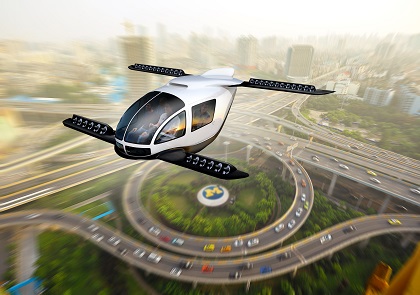
For example, a fully loaded VTOL with a driver and three passengers would produce less greenhouse gas than a regular car, which carries 1.54 people on average. The study found they produced 52 per cent less emissions than gasoline vehicles and six per cent less emissions than electric vehicles.
Senior author of the study Gregory Keoleian said, “To me, it was very surprising to see that VTOLs were competitive with regard to energy use and greenhouse gas emissions in certain scenarios. VTOLs with full occupancy could outperform ground-based cars for trips from San Francisco to San Jose or from Detroit to Cleveland, for example.”
Not only are flying cars more sustainable for long journeys, unsurprisingly they’re also a faster way to travel. The study noted that the point-to-point flight path and higher speeds resulted in a time saving of 80 per cent, compared with ground based travel.
Engineers are currently facing the challenge of meeting a growing demand for convenient transport, while reducing carbon emissions and congestion.
While electric cars and automated driving may achieve some of the goals in terms of reducing carbon emissions, they would contribute to the congestion problem. Researchers believe VTOLs could provide a solution, in the form of a piloted ride-share taxi service.
First author of the study Akshat Kasilwal said, “Not only is high passenger occupancy better for emissions, it also favors the economics of flying cars. Further, consumers could be incentivized to share trips, given the significant time savings from flying versus driving.”
During the study, the research team used computer simulations to compare three types of vehicles: the conventional internal combustion engine vehicles (ICEVs), battery-driven electric vehicles (BEVs) and VTOLs.
The scientists analyzed the five phases of VOTL flight: take-off, climb, cruise, descent and landing. They found that while lots of energy was expended during take-off and landing, it produced no greenhouse gas as it cruised at 240kph. However, the batteries would require electricity to be generated by a power plant.
For trips shorter than 35km, single-occupant conventional ICEVs were more sustainable to run. This is significant as the average commute in the US is 17km.
Co-author of the study Jim Gawron said, “As a result, the trips where VTOLs are more sustainable than gasoline cars only make up a small fraction of total annual vehicle-miles traveled on the ground. Consequently, VTOLs will be limited in their contribution and role in a sustainable mobility system.”
Several aerospace companies — such as Airbus, Boeing, Joby Aviation and Lilium — and agencies such as NASA are developing VTOL prototypes. The critical efficiency enabler for these aircraft is distributed electric propulsion, or DEP, which involves the use of several small, electrically driven propulsors.
Uber to take to the air in 2023
Uber’s Elevate team is also building a prototype for aerial ridesharing called uberAIR. They are utilizing electric VTOL technology in the hopes of developing infrastructure for a VTOL network, according to a whitepaper from the program’s launch in October 2016.
Uber said this network would be significantly more cost efficient than building heavy infrastructure such as rail, roads, bridges and tunnels. Additionally, it would revolutionize commutes; instead of following fixed routes, VTOLs would travel independently of a specific path. This would significantly reduce congestion, and single-event interruptions causing delays.

Currently, helicopters are the closest form of transport to VTOLs, but they are too noisy, too expensive and emit too much carbon. VTOLs, on the other hand, are ahead in each category. They are also likely to be safer; they won’t depend on a single part to stay airborne and will use autonomy technology to reduce operator error.
In the whitepaper, Uber suggests VTOLs will prove to be an affordable form of daily transport for the masses, and may be even cheaper than owning a car.
So how will it work? They plan to launch uberAIR in three different cities. Two have been selected: Dallas-Fort Worth, Texas and Los Angeles, California. The third will be announced later this year; a city in one of the following countries: Australia, Brazil, France, India or Japan.
The VTOLs will rely on Skyports, located on the tops of buildings. According to Uber, the top names in architecture, design and engineering are working on an all-new design to accommodate up to 1000 takeoffs and landings per hour.
Uber said they hope to start testing these networks in 2020, via the operation of demonstrator flights. Commercial operations are expected to begin in 2023.
- Details
- Written by: Isabella Foster
Until yesterday, every image you have seen of a black hole has been digitally rendered.
Despite being theorized for well over two hundred years and being common knowledge to even those outside the realm of astronomy, it has been all too easy to forget that we have never actually seen one.
Looking a bit like an out of focus doughnut, this groundbreaking first image shows a supermassive black hole found at the center of M87, a galaxy near our very own Milky Way.
The image is composed of a fiery looking halo surrounding a dark center. That center is the black holes event horizon, the point at which the gravitational pull becomes so strong that not even light can escape. The halo around it is a combination of dust and gas, the only thing that makes this image even possible to see.

Sitting 55 million light years from Earth and measuring 6.5 billion times heavier than the sun, this cosmic marvel was captured using eight radio telescopes located around the world. The concept in basic terms was that by having telescopes at different points of the world, scientists would be able to form a viewing array as wide as Earth itself.
Not surprisingly, it has taken a team of 200 international scientists over two years to formulate the means necessary to snap the picture of the unforgiving darkness that controls all space and time around it.
"We have seen what we thought was unseeable," said Sheperd Doeleman, director of the Event Horizon Telescope Collaboration (EHT).
At an even more groundbreaking level, the image matches up with Einstein’s 1915 theory of general relativity; a theory the great scientist himself thought was too wacky to be real.
However, not only is it another mic drop moment for Einstein but this image has opened a new realm of possibility. Astronomers will now more than ever be able to learn more about the stable features of a black hole and maybe even discover what happens to the materials that disappear beyond the inevitable event horizon.
"We are looking at a region we have never looked at before," said Heino Falcke, chair of the EHT Science Council.
"It feels like looking at the gates of hell, at the end of space and time – the event horizon, the point of no return."
- Details
- Written by: Quintus Potgieter
Pick-and-place robots are predicted to fully replace factory floor workers in the future. However, before these robots take over the floor, they will have to become more flexible with the objects they can pick-and-place. It all has to do with the robot's ‘vision.'
Making pick-and-place robots ‘see’ the objects they are to be picking up is not easy work. Things can often go wrong when a robot tries to pick up an object it has never encountered before.
However, a team from MIT’s Computer Science and Artificial Intelligence Laboratory developed the idea that they could assign 3D key points which would help the robot identify where and how to pick new objects up. They call their innovation kPAM - or Key point Affordance Manipulation.
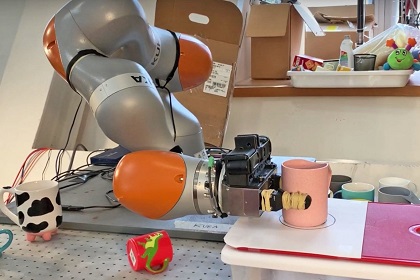
Russ Tedrake, the senior author of the report, wrote:
“Understanding just a little bit more about the object - the location of a few key points - is enough to enable a wide range of useful manipulation tasks..”
The team has successfully managed to get a robot to pick up an object without a fixed template. They say this is done through the novel formulation of ‘category-level manipulation’ using the 3D key points.
“Using this formulation, we factor the manipulation policy into instance segmentation, 3D key point detection, optimization-based robot action planning and local dense-geometry-based action execution. This factorization allows us to leverage advances in these sub-problems and combine them into a general and effective perception-to-action manipulation timelines.”
Their implementation of the system allowed for a robot to be able to pick up a mug and clean a pair of shoes, both without a prior template for the robot to follow.
The team is hoping that kPAM can be useful for more applications than just robot arms in the future. Their research could help transform the domestic robots that one could see in households in the next decades. And they also hope it will continue to assist in the automating of factory floors and the replacing of the more repetitive tasks within them.
Works Cited
“MIT Robot Uses 3D Keypoints for Advanced Coordination.” The Engineer, 18 Mar. 2019, www.theengineer.co.uk/mit-robot-keypoints/?cmpid=tenews_7701303&utm_medium=email&utm_source=newsletter&utm_campaign=tenews&adg=5A0EAC12-A7C5-4FD9-9AA8-84D6979695B5.
“KPAM.” Google Sites, sites.google.com/view/kpam.
- Details
- Written by: Quintus Potgieter
A private research university in Rhode Island is making substantial strides in the world of nanoscale engineering.
Researchers at Brown University have figured out how things stick together at the nano level, and this discovery could help inform micro and nanoscale device manufacturers.
The researchers have published their findings in Scientific Reports. The lead author of the study, Haneesh Kesari, says there have been theories about how things stick together at the nanoscale level in the last 100 years, but nothing has explained it as well as their research does.
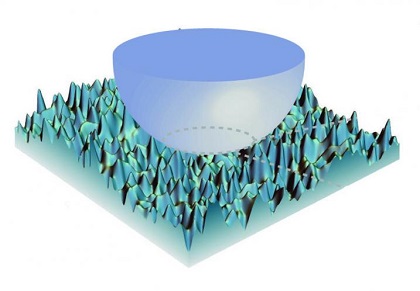
The engineers found that at the smallest of scales adhesive forces known as van der Waals forces exist. Kesari, who is also an assistant professor in Brown's School of Engineering, explained in a press statement:
“At the sub-micron scales, the adhesive forces become dominant, while the force due to gravity is essentially meaningless by comparison. That is why small insects like flies and ants can scale walls and ceiling with no problem. So from a practical perspective, if we want to engineer at those scales, we need a more complete theory of how adhesive forces deform and shape material surfaces, and coupled with surface roughness affect how surfaces stick to, and slip over one another.”
The research has been a decade in the making. Kesari has spent this time bringing solids together and pulling them apart while measuring their atomic force with an atomic force microscope (AFM) apparatus. They determined their findings during practical experiments, as is detailed in the press release:
“An AFM is a bit like a tiny record player. A cantilever with a small needle hanging from one end is dragged across a surface. By measuring how much the cantilever jiggles up and down, researchers can map out the physical features of a surface. For Kesari’s experiments, he modified the setup slightly. He replaced the needle with a tiny glass bead and used the cantilever to simply raise and lower the bead — bringing it into contact with a substrate and then pulling it back off over and over again. The substrate was of PDMS, a squishy polymer material often used in microscale engineered systems. The cantilever measured the forces that the two surfaces exerted on each other.”
In the experiment, when they brought the bead and the substrate in the closest proximity of each other without touching, the researchers found an attractive force between the two. When they eventually touched, the researchers observed that the two materials were trying to push each other away. What was surprising in this experiment, was the cantilever positioning.
Kesari says that he has not seen any literature to corroborate what he found. He showed that the amount of attractive force between the bean and the PDMS substrate was different depending on whether the cantilever was on its way up or on its way down.
Kesari is the first to uncover that it was surface roughness that played a part in the nanoscale makeup of materials that are in nanoscale proximity of each other. Through his experiments, a broader understanding of adhesion in nanoscale is possible. Explaining how this can be applied to the engineering industries at large, the press release the university put out quoted Kesari:
“For instance, he says, a full understanding of adhesion is helpful in designing micro-electro-mechanical systems - devices with micro- and nanoscale moving parts. Without properly accounting for how those tiny parts may stick and unstick, they may easily grind themselves to pieces. Another application could be using nanoscale patterning of surfaces. It might be possible to use nano-patterned surfaces to make solar panels that resist a build-up of dust, which robs them of their efficiency.”
Works Cited
Brownuniversity. “Research Details Sticky Situations at the Nanoscale.” EurekAlert!, www.eurekalert.org/pub_releases/2019-02/bu-rds020719.php.
University, Brown. “Sticky Situations Discovered in Nanoscale Engineering.” Research & Development, 11 Feb. 2019, www.rdmag.com/news/2019/02/sticky-situations-discovered-nanoscale-engineering.
- Details
- Written by: Quintus Potgieter
The progressive left and the hardline right: The United States' seemingly endless political stalemate seems to set the tone for how issues are discussed around the globe. And this conversation has extended into the world of electricity generation.
The discussion on the types of energy producing technologies America should employ has reached a peak with the release of a bill called the Green New Deal. Certain Democrats are trying to pass it through Congress.
The legislation's most prominent proponent and co-author is former bartender-turned Congresswoman Alexandra Ocasio-Cortez (AOC).
The resolution aims to meet ‘100 percent of the power demand in the United States through clean, renewable, and zero-emission energy sources’. However, it does not seem to indicate which technologies would be preferable.

Mike Shellenberger, the president of an organization called Environmental Progress, says America faces challenges in the renewables space that nobody is admitting to in the mainstream discussion. He says solar panels and wind turbines are two of the contentious issues plaguing energy debate — especially in California. In a report entitled ‘Why Renewables Can't Save the Planet,' published in Quillette, he writes:
“The first was around land use. Electricity from solar roofs costs about twice as much as electricity from solar farms, but solar and wind farms require huge amounts of land. That, along with the fact that solar and wind farms require long new transmission lines, and are opposed by local communities and conservationists trying to preserve wildlife, particularly birds.
“You can make solar panels cheaper and wind turbines bigger, but you can’t make the sun shine more regularly or the wind blow more reliably. I came to understand the environmental implications of the physics of energy. In order to produce significant amount of electricity from weak energy flows, you just have to spread them over enormous areas. In other words, the trouble with renewables isn’t fundamentally technical -- it’s natural.”
As a result, Shellenberger, and many on the political right in the U.S. point to nuclear power as the ultimate solution to low-emission, abundant electricity generation. However, those on the left seem to be turbo-charged in their refusals and disavowing of nuclear technologies.
Consequently, nuclear only accounts for 10% of the world’s energy demand. Proponents of nuclear say, however, that number should be much higher if the world wants more electricity for more humans. Shellenberger writes:
“A single Coke can’s worth of uranium provides all of the energy that the most gluttonous American or Australian lifestyle requires. At the end of the process, the high-level radioactive waste that nuclear plants produce is the very same Coke can of (used) uranium fuel. The reason nuclear is the best energy from an environmental perspective is because it produces so little waste and none enters the environment as pollution.”
Right-leaning media have asked AOC the question on how exactly she plans to pay for all of the industry-replacing measures she is suggesting the American government takes. This has made those on the more capitalist side worried that if Democratic candidates get closer to winning the presidency in 2020, added aggressive taxation might be imposed to reach the goals the Green New Deal wishes to reach.
Republican-aligned think tank American Action Forum says the Green New Deal's energy reform would cost between US $8.3 trillion to US $12.3 trillion if the country had to meet every requirement set out in the resolution.
The political games played in the energy sector is most destructive to prospective electrical engineers, who are now wondering which area of study is best suited to the future of energy production. Energy politics and mainstream media need to come to a bipartisan consensus so that the engineers of the future are efficiently informed.
Meanwhile, the diversification of the United States’ energy sector is an ongoing process that the world will be studying with a fine tooth comb. As other countries cut down on fossil fuel sources of energy, and implement more renewable sources, the United States looks to be apprehensive of overnight change.
Works Cited
“Representative Alexandria Ocasio-Cortez.” Representative Alexandria Ocasio-Cortez, ocasio-cortez.house.gov/.
“Why Renewables Can't Save the Planet.” Quillette, 1 Mar. 2019, quillette.com/2019/02/27/why-renewables-cant-save-the-planet/.
- Details
- Written by: Quintus Potgieter
Chinese scientists have developed an unmanned vessel upon which weather rockets will be launched. It is called rocketsonde and was launched from the semi-submersible vehicle (USSV) network built by the Institute of Atmospheric Physics. It is reportedly expected to generate ‘long-term, continuous and real-time marine meteorological measurements, including atmospheric sounding in the lower troposphere.'
The Institute has conducted trials in rivers and seas from May 2016 to November 2017.
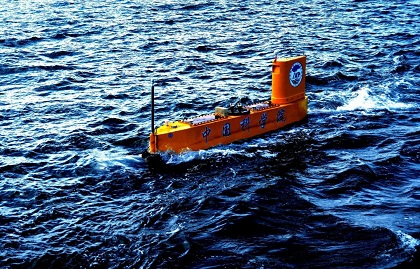
Lead author Hongbin Chen, a professor of atmospheric and marine science at the Institute of Atmospheric Physics, Chinese Academy of Sciences told The Engineers:
“Launched from a long-duration unmanned semi-submersible vehicle, with strong mobility and large coverage of the sea area, rocketsonde can be used under severe sea conditions and will be more economical and applicable in the future.”
Through their tests, they found their submarine and rocket technology could measure ‘sea temperature, vertical profiles of the pressure, temperature [in the air], relative humidity, wind speed, and wind direction.'
Dr. Jun Li, a researcher at the Institute of Atmospheric Physics, CAS also told the Engineer:
“The unmanned semi-submersible vehicle is an ideal platform for marine meteorological environmental monitoring, and the atmospheric profile information provided by rocketsonde launched from this platform can improve the accuracy of numerical weather forecasts at sea and in coastal zones.”
The researchers say that current technologies available for the purpose of producing meteorology and oceanography data are expensive to produce and operate — their approach may make the data much more accessible and drive down the costs of operation. Essentially, they are sending an unmanned submarine with a rocket on it out to sea, launching the rocket, and generating weather and atmospheric data. Engineering never fails to disappoint!
The researchers are now developing more USSVs and are looking to fit them with all sorts of sensors on them that can generate data on a plethora of marine science. All of these cost-friendly alternatives to the expensive technologies running today, according to the researchers, will produce ‘higher-resolution observations’ of the ocean for an extended duration of time. Their current USSV prototype is detailed in their journal:
“The vessel has a dry weight (with fuel) of 6200kg and carries a payload capacity of 300kg for an automatic weather station (AWS) in addition to computers, METOC sensors, sounding rockets and camera equipment. The USSV is powered by a diesel engine, and it was designed to be continuously operated for 10 days before retrieving the vessel for refueling and resting.”
The atmospheric measurements taken of the marine atmospheric boundary layer (MABL) will help determine the formation of high-impact weather patterns that produce typhoons and the like. Historically, it would be hard to measure the MABL due to safety considerations, but with an unmanned vehicle fitted with low-cost technologies, it could revolutionize the measuring of the MABL.
As climate science becomes more and more important, observations from the atmosphere above the world’s oceans will become crucial data to governments and meteorologists all around the world.
Works Cited
“China Launches World's First Robot Ship for Sounding Rockets.” Press Release - Digital Journal, 3 Feb. 2019, www.digitaljournal.com/tech-and-science/science/china-launches-world-s-first-robot-ship-for-sounding-rockets/article/542395.
“Weather Rocket Launched from Unmanned Chinese Vessel in World First.” The Engineer, 1 Feb. 2019, www.theengineer.co.uk/weather-rocket-unmanned-chinese-vessel/.
- Details
- Written by: Isabella Foster
It was close to being the first giant leap for womankind but is now a very public stumble for one of the world's leading space agencies.
NASA announced on Monday that the first all-female spacewalk in history would be cancelled due to a somewhat confounding mistake from the same agency that sent human beings to the moon; they didn’t have a spacesuit in the right size.
Anne McClain and Christina Koch were scheduled to walk together in space on Friday to change the batteries on some of the International Space Station’s (ISS) solar panels. What would have been a triumphant end to Women’s History Month came to an abrupt halt after realization that both astronauts would require medium-size torso components, in which the ISS only has one.
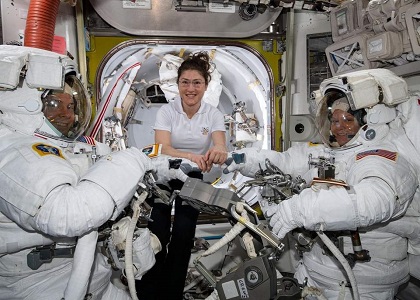
The mission will still go underway; however male astronaut Nick Hague will replace McClain.
"... after consulting with McClain and Hague following the first spacewalk, mission managers decided to adjust the assignments, due in part to spacesuit availability on the station," a NASA statement said.
"McClain learned during her first spacewalk that a medium-size hard upper torso -- essentially the shirt of the spacesuit -- fits her best. Because only one medium-size torso can be made ready by Friday, March 29, Koch will wear it.”
There has been a strong online reaction to the news, shifting a harsh spotlight onto the unsuspecting agency.
Immediate responses were seen on all social media networks with many seeing the change as another frustrating strike against progress for women participating in space missions. NASA sent their first female astronaut on a mission over three decades ago.
The agency even saw a response from politician Hillary Clinton, whose solution was to tweet “Make another suit” and whilst it might look good online, making another suit is no easy task and has been a sensitive issue with NASA before.
A 2017 inspector general report highlighted the need for new spacesuits as the ISS currently only houses eleven suits, all designed over forty years ago. The startling number was also followed up by the report further stating that NASA is still “years away” from having a new space suit ready for future deep-space missions. The 20 million dollar price tag on each suit doesn’t help the cause either.
Whilst it is disappointing that this major milestone for women in space won’t be reached this week, it’s more an important topic of safety rather than sexism.
"This decision was based on my recommendation," McClain tweeted yesterday (March 27). "Leaders must make tough calls, and I am fortunate to work with a team who trusts my judgement.”
We must never accept a risk that can instead be mitigated. Safety of the crew and execution of the mission come first."
- Details
- Written by: Quintus Potgieter
Surely civil engineers who get to work on the world's largest and most up-and-coming vacation spots are the envy of their profession!
South Korean (and Spanish) civil engineers will be hard at work on the world’s largest man-made surf park in Turtle Island, South Korea very soon. Spanish wave pool company Wavegarden made the announcement in November 2018, reporting that they had signed a contract with Daewon Plus Construction — who happen to be South Korea's largest real estate and theme park developers.
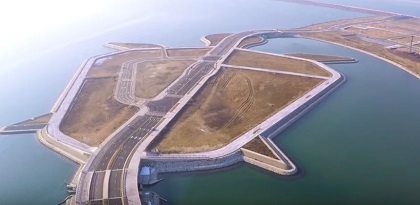
Turtle Island, a man-made island (literally in the shape of a turtle) is just an hour away from Seoul, the capital of South Korea. The image you are seeing above is the open land at Turtle Island where the hotels, Wavegarden park, and the marina will be constructed.
In their press statement, Wavegarden wrote:
“Constructed on land reclaimed from the ocean, Turtle Island is a new international waterfront destination, which will have different water and landside leisure facilities including hotels, convention centers, and marinas. The centerpiece of the 2.1 billion Euro (about $2.3 billion USD) avant-garde mixed-use development will be the Wavegarden Cove surfing lagoon.”
They intend to have the wave park open in 2020. The surf park will have a one-kilometer ‘beach front' that will provide lots of space for holiday goers. The Cove - an artificial wave generating pool - will reportedly create 1,000 waves per hour. Wavegarden says surfers of all ability levels are welcome. In their press release, they also talked about the novel engineering technologies that they work with:
“The state-of-the-art machinery can produce millions of waves per year and is designed to recover part of the energy used in the wave generation process to attain the lowest possible energy consumption. The innovative water treatment system, developed specifically for wave lagoons, will keep the water transparent and clean throughout the year. Its intelligent design uses the energy of the waves to acquire the highest level of energy efficiency available nowadays for large recreational water bodies."
Fernando Odriozola, Chief Commercial Officer at Wavegarden, told media:
“With consistent waves of different sizes and shapes, Turtle Island is going to be the new beach of Seoul and the place to surf for families, professional surfers, and everyone in between.”
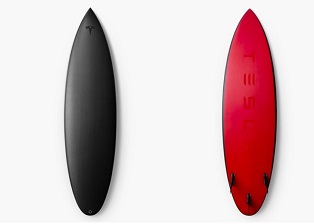
And what better way to enjoy the world’s largest surf park than to surf the waves on the world’s most cutting edge carbon fiber surfboard? Alright, it’s a pretty regular surfboard with all things considered, but it is ‘engineered’ in collaboration with Tesla and Matt Biolos' Lost Surfboards. Elon Musk got the surfboard company to partner up with Tesla to create 200 boards and sell them for USD $1,500 each.
Wavegarden reports that they have signed a host of new contracts that will see Wavegarden technology making its way into five continents around the world. Two other wave pools are being built in Melbourne and Bristol.
To see what a Wavegarden experience looks like, see the video below:
Works Cited
SurferToday.com, Editor at. “Tesla Surfboard Accelerates down the Line.” SurferToday, SurferToday, www.surfertoday.com/surfing/tesla-surfboard-accelerates-down-the-line.
“Worlds Largest Surfing Lagoon: South Korea.” Carvemag.com, 7 Feb. 2019, www.carvemag.com/2019/02/worlds-largest-surfing-lagoon-south-korea/.
- Details
- Written by: Quintus Potgieter
Universal access to clean drinking water is a challenge our world continues to face.
According to the World Health Organization (WHO), 2.1 billion people lack safe drinking water at home. That equates to 3 in 10 people worldwide. Moreover, twice as many people don't have access to basic sanitation.
The treatment of wastewater throughout the world is essential — that recycled water is used as drinking water in some cases.
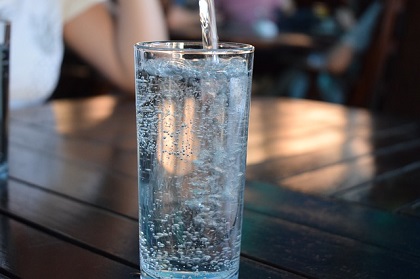
Students and professors at the University of New South Wales and the Australian National University have for years been trying to develop what they believe is a new low-cost alternative to killing bacteria in wastewater.
Professor Ninham told The Australian:
“The work is the culmination of 40 years of pure undirected curiosity-driven research. In particular, the cost and destruction caused by viruses in water remains an unresolved challenge and poses a major limitation on the use of recycled water. Here, we develop an environmentally friendly technology for sterilising water.”
This particular methodology is being touted as a world first. The universities say their treatment methods have sterilized the water from bacteria, diseases, and drugs. These diseases include E-coli and potentially even Ebola.
The scientists engineered new technology that utilized carbon dioxide (C02) as a way of treating wastewater. They reached the conclusion that the C02 was instrumental in killing bacteria and eliminating the viruses present in the dirtiest kinds of water. The researchers noted that C02 was an essential factor in nature, in the way that it killed viruses and prevented infections.
These findings were published in the Nature journal. This treatment method had also proven useful for bringing the price of desalinating water down. Researchers found they were able to eliminate heavy metals like arsenic, lead, mercury, and radioactive waste through a novel bubbling process. Professor Ninham said:
“The technology bubbles heated unpressurised carbon dioxide or exhaust gases through wastewater in a bubble column, effectively destroying both bacteria and viruses. The process is extremely cost-effective, with no concerning by-products."
Similar work is being done all over the world, to develop new technologies for water treatment. Scientists and engineers are finding new ways to treat water that don't involve mechanical filters and membranes.
A system was also developed at Princeton University in 2017. The low-cost silicone rubber tube splits into two channels. Pressurized C02 goes through one of the channels, and the water goes through the other.
The carbon dioxide gas then mixes with the water, creating charged hydrogen and bicarbonate molecules. They separate the wastewater particles and let the filtered water pass through.
The Australian technology allows unpressurized C02 to be used in treating the water.
The Australian researchers say that their way of doing things will lead to less plastic bottle waste due to the treating of water straight from the source, and will also bring down the number of Ebola outbreaks in places like Africa.
Works Cited
Quick, Darren. “‘SodaStream’ Technique Delivers Low-Cost, Filter-Free Water Purification.” New Atlas - New Technology & Science News, New Atlas, 16 May 2017, newatlas.com/princeton-water-purification-filterless-c02/49534/.
The Australian. Carbon dioxide kills viruses, bacteria in the water. https://www.theaustralian.com.au/news/health-science/carbon-dioxide-kills-viruses-bacteria-in-water/news-story/a5e0f9d87f3b3a636eefc9d119175066
- Details
- Written by: Quintus Potgieter
The prototype of the world's longest aircraft is being retired, with new aircraft innovation promised to hit the market soon.
The aircraft in question was the Airlander 10: a weirdly shaped plane-airship/blimp that showed what the future of air travel could look like. Needless to say, it does not look like your regular Airbus.
It was the product of Hybrid Air Vehicles (HAV), a company based in Virginia in the United States. The company surprisingly obtained the Civil Aviation Authority's (CAA) approval and are now confident that they can build their final prototype and take it to the skies in 2020.
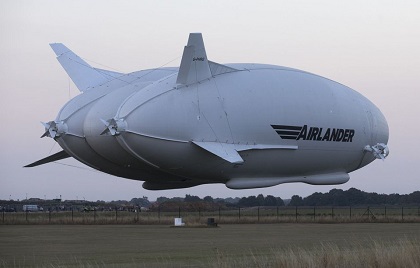
Social media was not kind to the shape of the aircraft, with some calling it ‘the flying bum.'
The prototype — which looks like it flew out of a science fiction novel — went through its fair share of trial and error. The prototype crashed nose-first in 2016 on its maiden flight. Luckily, no one was hurt. Regardless, the engineers are working on ironing out all of the kinks and are ready to go to market in 2020.
Stephen McGlennan, the company’s CEO said:
“Our focus is now entirely on bringing on bringing the first batch of production-standard, type-certified Airlander 10 aircraft into service with customers. The prototype served its purpose as the world’s first full-sized hybrid aircraft, providing us with the data we needed to move forward from prototype to production-standard. As a result, we do not plan to fly the prototype aircraft again.”
Nonetheless, the final prototype is expected to look similar in regards to the interior. The 2012 prototype was named the world’s most luxurious aircraft. The aircraft is ultra-spacious in the inside, it even has an en-suite bedroom, an Infinity Lounge with panoramic views, and a glass floor that will allow travelers to see what is below them from 16,000 feet up. There is even a bar on board.
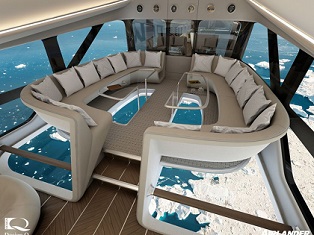
The Airlander is targeted at travelers who are looking for an extended holiday in the skies. McGlennan said:
“Air travel has become very much about getting from A to B as quickly as possible. What we’re offering is a way of making the journey a joy.”
Even though the prototype has been through the (engineering) wringer, the engineers are presumably ironing out the kinks and ready to revolutionize what people think air travel looks like. The Airlander does not need a runway, it can take off - and land - on any flat surface.
And what might one of these Airlanders cost, you might ask? The original model cost a cool US $25 million.
Plane or blimp?
HAV is not the only company trying to harken back to the days of the blimp or airship, a company named Plimp is also hard at work reintroducing the form of travel back into the mainstream.
They have just announced their new Model J Plimp airship. It is being touted as a new class of aircraft, developed by the engineers of Egan Airships. They say that the Plimp is plummet-proof and is ultra-safe.
They advertise it as part-plane, part-helicopter, part-blimp. It seems that the world should anticipate more hybrid aircraft. The company says they have not invented any new technology - the technology needed to design a Plimp is all off-the-shelf.
The reality of these hybrid aircraft engineering companies is that they are tough to get off of the ground. Both Airlander and Plimp, with their wheel-reinventing ideas in the aircraft industry space, are trying to build sustainable businesses out of their endeavor. That is the tough part for these entrepreneurs. Plimp has patented their design, and they're ready to roll out their eight-passenger blimp if anyone in the market is interested.
Works Cited
Boyle, Alan. “Egan Airships Floats a Sales Campaign to Get Its Plimp Hybrid Aircraft off the Ground.” GeekWire, GeekWire, 8 Nov. 2018, www.geekwire.com/2018/egan-airships-floats-sales-campaign-get-plimp-hybrid-aircraft-off-ground/.
Sky News. "Airlander 10: World's Longest Aircraft to Go into Production and Offer 'Luxury Expeditions.'" Sky News, Sky News, 14 Jan. 2019, news.sky.com/story/airlander-10-worlds-longest-aircraft-to-go-into-production-and-offer-luxury-expeditions-11607125.
- Details
- Written by: Quintus Potgieter
Mechanical engineers are ready to unveil the mechanical clean energy technology that has been 10 years in the making.
The engineering firm behind it is named Makani, a company tied to Alphabet’s Google X Lab. The purpose of the company is to ‘create radical new technologies to solve some of the world’s hardest problems’.
One of the more renowned projects that have come from Google X Lab is Project Loon; specially engineered balloons that could be launched into the stratosphere and provide internet access to rural parts of the world.
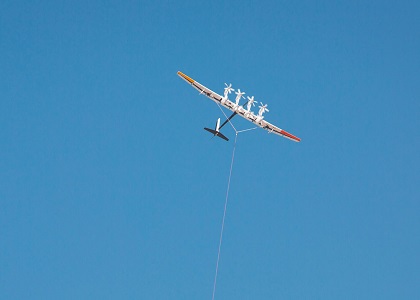
Makani, is joining their fellow projects with airborne technologies that could help people on the ground a whole lot. You may have heard of wind energy, but have you heard of airborne wind energy?
What they have developed are called ‘Makani kites’. Makani energy kites, the company says, will produce electricity by harnessing energy efficiently from the wind.
The ‘kite’ is a solar-plane looking object with four rotors that gets flung through the air and gets thrown into a loop. Whilst in the loop, the rotors spin and the wind moves through them. The kite flies autonomously 1400 feet high and loops in a diameter of 250 meters. The rotors’ energy, moving with the force of the wind, generates the electricity. On-board the kite, sensors, a GPS and inertial navigation system are all present.
The company on their website say:
“Wind energy has the potential to power the world 100 times over, yet only 4% of the world’s electricity comes from wind. The Makani energy kite system integrates advances in aerospace engineering, materials science, and autonomous controls to create a lightweight design that is easy to transport and install.”
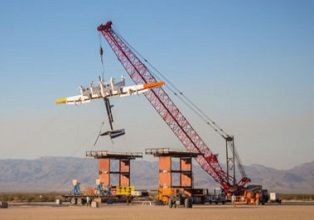
They also note that only 4% of the world’s electricity comes from wind. Thus, they intend to use the kites to up the amount of electricity that can be distributed via the kite-generation method to up the aforementioned percentage.
The kite’s energy generating capacity is in its name: M600. The kite will generate 600 kW of electricity - roughly the amount of energy that could power 300 homes.
And the applications for the technology keep growing. The engineers are confident that their kite could be useful in areas that have been devastated by natural disasters who have lost access to electricity.
“The low mass of Makani’s system unlocks wind energy resources in areas like deepwater offshore that are not economically viable for existing technologies. Harnessing energy from the wind in new place means more people around the world will have access to clean, affordable wind power.”
According to Teslarati, the industry is starting to heat up and competitors are entering the fray in the airborne wind energy industry. However, Makani is the only company generating electricity in the way they are.
The engineers are not finished innovating. They are at work, designing more technologically advanced versions of the kite. The future of agile wind energy could be big - which makes it a good industry for mechanical engineers and electrical engineers to monitor.
Works Cited
Alvarez, Simon. “TSLA Analyst Summarizes Model 3 Ramp: ‘Tesla Failed on Its Original Plan, but Achieved a World-Class Result.’” TESLARATI.com, TESLARATI.com, 6 Dec. 2018, www.teslarati.com/tesla-tsla-analyst-model-3-ramp-original-plan-fail-world-class-result/.
“Makani Kites: Airborne Wind Energy.” X – The Moonshot Factory, x.company/makani/.
- Details
- Written by: Quintus Potgieter
An earthquake rocked the city of Anchorage in the state of Alaska on Friday the 30th of November 2018. On the Richter scale, it measured in at 7.0. Since then 1,000 aftershocks have been observed. Not since 1964 had there been such an intense earthquake in the area.
Thankfully, there were no deaths or serious injuries reported in the aftermath of the quake. However, infrastructure was hit incredibly hard. Roadways in Anchorage were damaged, and water lines were ruptured. Natural gas workers have also been flown in to restore gas to households, and fix any faults that might have occurred when the earthquake hit.
The civil engineers jumped into action, repairing the roads in record time! The repair crews have become the golden standard for civil engineering reaction to post-earthquake road repair.
One of the more damaged roads was the freeway off-ramp at the International Airport Road and Minnesota Boulevard. The road was featured in much of the mainstream media coverage of the earthquake and shows what the repair crews faced.

Despite this it took only four days for the Alaska Department of Transportation and Public Facilities to complete the repairs!
Alaska Tour & Travel’s Facebook page shared the image of the seemingly overnight repair. Even the Anchorage Police Department shared the image. The write up read:
“Here is just another great example how Alaskans are responding after last Friday’s earthquake! The off-ramp at International Airport Road and Minnesota Boulevard in Anchorage was reopened early this morning, complete with new asphalt.”
So astounding was the turn-around that social media commenters dismissed the photo as fake. One commenter joked that it would take six years to fix a pothole in Texas. An Alaskan commenter eventually uploaded his own photo of the newly repaired road, proving that the road had indeed been repaired. Other commenters celebrated the repair crews who braved the cold and patched the road up.
The Department of Transportation reported that compacting asphalt in the colder temperatures was difficult, but the repairs had to be done.
The Anchorage Assembly declared a state of civil emergency in the city as earthquake damage repairs progressed. The structural integrity of the bridges, after the quake, was also a major concern. Extra inspectors were brought in from the Department of Transportation to do the necessary studies and calculate the damage. Aftershocks were the most concerning, because further cracks to bridges and roads could be expected.
Overall, the remarkably efficient repairs to the roads and other infrastructure in Anchorage are astounding - the only other example of roads being repaired so quickly after earthquake damage is in Japan.
Works Cited
Gilmour, Jared. “Alaska Road Crews Quickly Fix Quake Damage, Shocking Pothole-Plagued Lower 48.” Thenewstribune, The News Tribune, www.thenewstribune.com/news/nation-world/national/article222638685.html.
Holcombe, Madeline, and Eliott C. McLaughlin. “Alaska Hit by More than 230 Small Earthquakes since Friday.” CNN, Cable News Network, 2 Dec. 2018, edition.cnn.com/2018/12/02/us/alaska-earthquake/index.html.
- Details
- Written by: Quintus Potgieter
With the proliferation of renewable energy, industrial automation and electrical engineers are banding together to create the power grids of the future. The latest automated mechanisms making factories more efficient are also making their way into the electricity distribution industry - for smarter power grids.
Future-proof energy grids which use intelligent, automated technologies are being targeted by governments around the world. They are, however, expected to improve on coal-powered electricity generation.
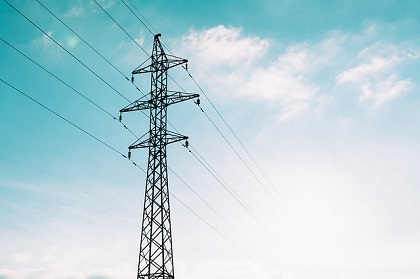
In South Africa, poorly designed power stations have led to rolling blackouts in the country. According to City Press, at one of the more important power stations, Medupi Power Station, design flaws resulted in its failure ‘to control the heat of superheated steam circulating between the boiler and the turbine that produces electricity’.
This is something the Industrial Internet of Things (IIoT) and new cutting edge automation technologies could prevent. With IIoT in the design phase, automation engineers could have avoided these design blunders and rolling blackouts.
Power plants can be run more efficiently - generating more data for engineers to peruse – to ensure there is continuous monitoring of the health of the plant, and much more. Analog will have to give way to digital means of control in the electricity sector.
The IIoT-World’s checklist of functions (or qualities) that a IIoT-connected power plant should embody is an incredibly comprehensive summary of what is expected from the power plant of the future. The plants need to be:
Evolving
- Continuously learns from the past to improve efficiency
- Has a technology foundation that evolves, never becoming obsolete
- Allows continuous and flexible DCS upgrades
Self-sustaining
- Is aware of its operating status, all the time
- Knows its operating limits and capabilities
- Asks for maintenance at the correct time
- Does more with less - in operations and maintenance
Predictive
- Knows how much energy it needs to produce to meet market commitments
- Manages resources optimally in relation to operating status, weather and market constraints
- Know when equipment has developed a fault and when it requires repair
Protecting
- Safe for people, the local community and the environment
- Conscious of its environmental impact, always minimizes emissions
- Safe for employees
- Cyber secure
Adapting
- Flexible in relation to market requests
- Anticipates market requests by forecasting external conditions
- Open and responsive to owner and grid requirements
- Can operate within a virtual power pool of renewable and conventional plants
Introducing industrial automation into the electrical engineering industry will help keep the lights on across the world.
Creating smarter networks of electricity distribution at a utility level is all good and well - but decentralizing it will also be advantageous. In South Africa’s case Eskom has the monopoly on distribution. It has stifled progress and many believe privatization of the industry will provide a solution.
Mark Feasel, vice president of Schneider Electric, talking to Automation World said:
“Being able to accommodate energy created in a more decentralized fashion is the story of a more complex grid. Automation is key to unlocking the ability to operate in this world of more complexity.”
Automation World contributing writer, Beth Stackpole, points out that centralized utilities are not able to keep up with galloping innovation: from the varied and unstable sources of electricity through to the many new uses for it. She writes:
“The legacy grid, based on a central generation, transmission and distribution model, was not architected to support modern-day electricity needs--whether accommodating peak demands for unpredictable renewable energy sources like wind and solar, or driving the burgeoning market for electric vehicles (EVs).”
Increasingly engineers are finding they are obliged to broaden their engineering knowledge, and so it is here: industrial automation has begun to play a substantial role in electricity distribution methodologies. The industrial technologies and their automated functions are being implemented in this multidisciplinary way to ensure that efficiency is upheld across all industries.
Works Cited
“Automating the Grid in a Modern Age of Electrification.” The Wireless Revolution: Transforming Industrial Networking | Automation World, www.automationworld.com/article/topics/industrial-internet-things/automating-grid-modern-age-electrification.
“Five Main Qualities of Industrial IoT in the Digital Power Plants.” Create a Culture of Innovation with IIoT World!, 29 Sept. 2017, iiot-world.com/connected-industry/five-main-qualities-of-industrial-iot-in-the-digital-power-plants/.
Rensburg, Dewald van, and Aldi Schoeman. “Inside the Eskom Crisis: Why the Lights Keep on Going Out.” CityPress, 10 Dec. 2018, city-press.news24.com/News/inside-the-eskom-crisis-why-the-lights-keep-on-going-out-20181210.
- Details
- Written by: Quintus Potgieter
With the festive season just around the corner, it might be time to start planning your next vacation. While on holiday, you might be able to admire some impressive feats of civil engineering. That much is true if you're visiting the Maldives this year.
A structural engineer from Auckland is making news around the globe. His name is Michael Murphy, and he has built a hotel...underwater. Murphy is world-famous for his work on aquariums and underwater restaurants. He graduated with a Bachelor of Engineering in civil engineering at Auckland University in 1971.
The new underwater hotel villa has officially opened in the Maldives as a new addon to the Conrad Maldives Rangali Island. It’s named the Muraka. The top level is above water, and the bottom is fully submerged under the sea.

It provides the patrons willing to pay US $55,000 per night, a night's sleep 16 feet down on the Indian ocean floor.
For the hefty price, patrons get access to a 24-hour team of staff, ready to assist guests during their stay. Allegedly, there is access to a personal yacht as well.
The structure cost US $22 million to build. "It's one of the most challenging projects I've had. And super exciting at the same time," Murphy told reporters. It is now considered to be the world's first underwater hotel.
Constructing underwater
Constructing a hotel room underwater was no easy feat. The structure was prefabricated in Singapore. Three sections were assembled atop a barge that was then towed to a crane ship, which was waiting to begin construction at Rangali Island.
Steel piles were embedded into the seafloor, and after that, the two cranes atop the crane ship planted the prefabricated sections of the hotel room onto the steel foundation. The hotel was in the planning phase for 13 years. Finally getting the designs implemented on the ocean floor was challenging. Even marine biologist staff members were part of the process to ensure that the marine world below wasn't damaged by the building of the room.
Murphy told Hotel Designs:
“Site conditions are paramount. This includes tidal range, water depths, protection from storms, storm wave heights, wind loads, type of soil for driving piles, access for big crane ships etc. This dictates freeboard heights, the depth of undersea unit below the sea level, height of stairwell, piling design and everything else. The greater the volume, then the more water displaced, which means more buoyant uplift, which means more weight to hold the unit down so that it doesn’t float.”

The room just happened to be the maximum weight that the cranes could handle; it weighs in at 600 tonnes. A spiral staircase leads from the top level to the bottom level, revealing the 180 degree view of the bottom of the ocean.
Fancy sleeping with the fishes? It is now possible.
Works Cited
Undersea Villa | THE MURAKA | Conrad Maldives Rangali Island Luxury Resort, www.conradmaldives.com/stay/the-muraka/.
Kilburn, Hamish. “Designing the World's First Luxury Underwater Hotel.” Hotel Designs, Hamish Kilburn Https://Secure.gravatar.com/Avatar/2edcad40930314dca244a6a9d0589916?s=96&d=Mm&r=g, 7 Aug. 2018, hoteldesigns.net/industry-news/designing-the-worlds-first-luxury-underwater-hotel/.
Umbers, Lee. “Sleeping with the Fishes... Kiwi's $73,000 a Night Underwater Hotel.” NZ Herald, NZ Herald, 10 Nov. 2018, www.nzherald.co.nz/travel/news/article.cfm?c_id=7&objectid=12156573.
- Details
- Written by: Quintus Potgieter
President of the United States, Donald Trump, phoned American Navy service members on Thanksgiving to discuss their aircraft catapult system.
On the phone with the commander of the USS Ronald Reagan aircraft carrier, Trump asked a few questions about the system they were using. Catapults are used to get the aircraft airborne which would otherwise be impossible with the short runways the ships have. The USS Ronald Reagan is a nuclear-powered aircraft carrier, utilizing a steam-powered aircraft catapult. The catapult diverts steam from the ship's nuclear reactor and uses it to launch the planes.
However, the U.S. Navy is in a phase of transition from steam to electromagnetic systems on some of their carriers. They are called Electromagnetic Aircraft Launch Systems (EMALS), and they are developed by an organization called General Atomics for the United States Navy.
In the last two years, the USS Gerald R. Ford was fitted with four electromagnetic catapults.
The system forgoes the steam piston and instead relies on a linear induction motor. The change seemingly helps accelerate and launch aircraft in a much smoother fashion when compared to the steam catapult systems. The steam catapults date back to World War II and require a significant level of maintenance from engineers.
The linear induction motor in the electromagnetic catapults utilizes electric currents, creating a big surge of electricity to propel the plane. But, the President thinks it isn't worth its weight in salt. He pressured the Navy to ditch the new EMALS. Speaking to Time Magazine in 2017, Trump recapped the conversation he had about the system with a member of the Ford:
"You know the catapult is quite important. So I said what is this? Sir, this is our digital catapult system. He said well, we're going to this because we wanted to keep up with modern [technology]. I said you don't use steam anymore for catapult? No sir. I said, "Ah, how is it working?" "Sir, not good. Not good. Doesn't have the power. You know the steam is just brutal. You see that sucker going and steam's going all over the place, there's planes thrown in the air."It sounded bad to me. Digital. They have digital. What is digital? And it's very complicated, you have to be Albert Einstein to figure it out. And I said–and now they want to buy more aircraft carriers. I said what system are you going to be–"Sir, we're staying with digital." I said no you're not. You going to goddamned steam, the digital costs hundreds of millions of dollars more money and it's no good."
Fast forward to the Thanksgiving 2018, Trump once again brought up the doubt he had with the electromagnetic launching systems. Speaking to an official on the USS Ronald Reagan, over the phone, Trump once again cast doubt into the electromagnetic catapults. He said:
"Steam is very reliable, and the electromagnetic — I mean, unfortunately, you have to be Albert Einstein to really work it properly."
To which the Navy service member on the other side of the phone replied:
“You sort of have to be Albert Einstein to run the nuclear power plants that we have here as well, but we’re doing that very well.”
What’s the deal?
While it seems Trump lacks the formative knowledge regarding which catapult system is best for the Navy, the electromagnetic systems have gone through some trial and error. The initial tests done on the USS Ford were a failure in 2015. It was only much later that they moderately perfected the launching system.

According to Popular Mechanics, the engineers atop the Ford were worried about the move to electromagnetic due to the first failed tests. They allegedly ‘briefly considered' going back to the steam catapults for the USS John F Kennedy and USS Enterprise which were under construction at the time.
Steam catapults, over time, are more destructive on the airframes of the aircraft it launches. EMALS would, therefore, be a better investment. But, the Navy Times reported in January 2018 that EMALS ‘may not be ready for the fight.'
The Director, Operational Test and Evaluation report states:
“Poor or unknown reliability of the newly designed catapults, arresting gear, weapons elevators, and radar, which are all critical for flight operations, could affect the ability of the carrier to generate sorties, making the ship more vulnerable to attack, or create limitations during routine operations. Based on current reliability estimates, CVN78 is unlikely to be able to conduct the type of high-intensity flight operations expected during wartime.”
Nonetheless, some of the lieutenants are reporting that the steam catapults make for a very violent takeoff experience, a problem that the EMALS don't seem to have. The EMALS could reduce the amount of bouncing the plane does before it gets launched off of the runway, which would be an advantage. However, the urge to rapidly digitize the ships has some in the Navy, and the US President himself saying, "not so fast."
Works Cited
Miller, Zeke J. “Donald Trump: TIME Interview on Being President.” Time, Time, 11 May 2017, time.com/4775040/donald-trump-time-interview-being-president/.
Mizokami, Kyle. “Donald Trump's Problem With the Navy's Electromagnetic Airplane Catapult, Explained.” Popular Mechanics, Popular Mechanics, 15 Feb. 2018, www.popularmechanics.com/military/weapons/a26478/donald-trump-emals-steam-catapult-aircraft-carrier/.
Ziezulewicz, Geoff. “Report: EMALS Might Not Be Ready for the Fight.” Navy Times, Navy Times, 16 Feb. 2018, www.navytimes.com/news/your-navy/2018/02/16/report-emals-might-not-be-ready-for-the-fight/.
- Details
- Written by: Quintus Potgieter
It's the year 2021. You are on a cruise ship, soaking in the sun, inhaling crystal clean air, and drinking a cocktail. While you're on this vacation, it never occurs to you that the very ship you are on is being powered by rotten fish.
Yep. The Norwegian cruise liner group Hurtigruten is planning to power their ships using biogas, liquified natural gas (LNG) and solar-powered battery packs. Biogas is made with organic material like dead plants and animal waste. The company will speed up the decomposition of organic waste and capture the methane it produces.
The group intends to have these ‘fuels’ in place and ready to power their fleet by 2021.
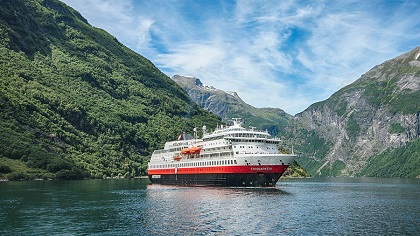
Hurtigruten CEO Daniel Skjeldam told the Telegraph:
“What others see as a problem, we see as a resource and a solution. By introducing biogas as fuel for cruise ships, Hurtigruten will be the first cruise company to power ships with fossil-free fuel. While competitors are running on cheap, polluting heavy fuel oil, our ships will literally be powered by nature. Biogas is the greenest fuel in shipping, and will be a huge advantage for the environment. We would love other cruise companies to follow.”
The company says that it will be utilizing the cutaways from fisheries and other organic waste will soon be used in the ships. It is quite clear that the electrical engineer on the cruise liners, is going to be seeing some of the world’s first alternative powering methods for ships.
The move will cost the company US $826 million over the next three years, to fit six of the 17 ships in the fleet with the new technology. The company is buying three new vessels that will be run only on clean electricity technology. But they will have diesel engines as a backup.
Skjeldam told media that his ship's crew members have seen how ‘glaciers retreat' due to climate change, possibly caused by emissions. He adds that the crew members say they also observe too much plastic on beaches where the ships land. Consequently, Hurtigruten confirmed that they will do away with single-use plastics.
Powering ships while docked
It is not the first time clean energies are being implemented in the cruise liner business. Siemens has developed a technology for when ships are docked at the harbor to ensure they do not create unnecessary air pollution.
Most cruise liners still utilize diesel generators that power their vessels. At a harbor, however, the air quality is a concern. Therefore, running a ship for a prolonged time while docked increases the chances for emissions to degrade the air quality at the harbor.
To combat this problem, Siemens developed the first European onshore power supply for cruise ships back in 2015. The system allows the ships to turn off their diesel generators while in the harbor. They have dubbed it the SIHARBOR shore connection system.
Berthed ships of all kinds can benefit from this setup due to how flexible and straightforward it is. A simple cable management system it all it takes to connect the ship to an onshore source of power. Siemens has their own patented robot arm that feeds the cable system to the boat, specially designed for the tidal range of the ocean.
The trend rising of powering cruise ships offshore and onshore with clean power is encouraging to observe. Ninety percent of the world's goods are transported via ships — making them cleaner will be good in a world craving fuels that emit fewer carbon emissions.
Works Cited
Featherstone, Emma. “Hurtigruten Cruise Ship to Be Powered by Rotten Fish in World First.” The Telegraph, Telegraph Media Group, 19 Nov. 2018, www.telegraph.co.uk/travel/cruises/news/rotten-fish-to-be-partly-used-to-power-hurtigruten-cruise-ships/.
“Forum for Science, Industry and Business.” How Are Cells Held Together?, www.innovations-report.com/html/reports/energy-engineering/siemens-builds-the-first-european-onshore-power-supply-for-cruise-ships.html.
- Details
- Written by: Quintus Potgieter
For 15 years, the city of Gweru in central Zimbabwe has been increasingly dry, with water failing to flow into one of their reservoirs. However new water infrastructure would cost the council US $10 million. Since Zimbabwe is enduring extraordinarily tough economic times, an expense of this magnitude was daunting.
As is so often the case, a group of engineers managed to save the day! With little in their public coffers, the Zimbabwean government enlisted the help of the German Development Cooperation-GIZ-Ausaid. GIZ-Ausaid’s head of urban water and sanitation, Mr Stephen Lidsber told the Herald newspaper:

“We asked them what was wrong with the old infrastructure. We decided to fly in a team of German engineers to look at the problem. They spent a good two months looking at ways of getting the water into the city’s reservoir. They discovered it was just a single valve that was malfunctioning. So they opened the valve and they are now able to pump water into the Kopje reservoir tanks.”
Instead of the anticipated $10 million, the German engineers cost the Zimbabwean city US $60,000.
The German Ambassador to Zimbabwe, Thorsten Hutter, praised the city’s frugal approach to the problem. He said:
“Maintenance is always cheaper than buying new equipment. As a local authority, it is important you invest in maintenance. This partnership shows good cooperation based on mutual respect and I hope it will last for a long time.”
Can we fix it? Yes, we can
A culture of consumerism has, unfortunately, become the norm; even fashionable. It has resulted in many industries intentionally engineering products that break more quickly than in the past. This approach has turned us into a throw-away society — it encourages us to replace products rather than consider alternatives.
However, the old culture of repair is at last re-emerging and will, in time, replace our tendency to discard engineered products.
It is a significant shift, particularly for those nations having to eke out scarce resources.
And then there is the issue of landfill.
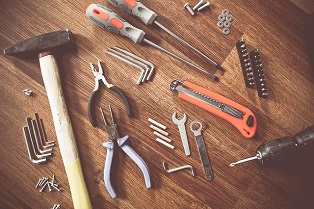
According to the North London Waste Authority (NWLA), in the UK 22 million pieces of furniture, 11,000 bicycles, and over 28 million toys are thrown away every year when in reality they could be repaired. The NWLA’s Clyde Loakes told Sky News:
“We’ve got ourselves into a bit of a rut and it’s not just a London thing, it’s not just a UK thing, it’s a global thing. We buy things for a certain period of time and when it breaks, because we’ve lost the skills to fix things, we just throw those items away and it’s just easier and more convenient to just go and buy a replacement.”
Several groups or clubs are starting up in Europe (and indeed elsewhere); they encourage meetups to assist with repairing technology. Some groups like ‘The Restart Project’ host parties and promote volunteerism in the repairing industry. Their website indexes repair parties across England. It says:
“Come to one of our free community repair events, where our volunteer fixers will help you learn how to repair your broken or slow devices - and tackle the growing mountain of e-waste.”
The Culture of Repair Organization’s website targets a wide audience; with some of their educational resources for those still at school. It is likely that curricula encouraging a culture of repair will become commonplace in the next few years.
One startup, the Fixit Clinic, is training the designers and engineers of tomorrow to manufacture longer-life products. The clinics hope to influence the way designers and engineers design and create products later on in their careers.
The culture of repair supports the environmentalist: where the world of manufacturing becomes more sustainable and is in sync with other, but related environmental principles: reuse, reduce and recycle.
Works Cited
“Educator Resources.” Culture of Repair, www.cultureofrepair.org/educator-resources/.
Herald. “The Herald.” The Herald, The Herald, 16 Nov. 2018, www.herald.co.zw/.
Vittozzi, Katerina, and Sky News. “We Throw Away Millions of Items That Could Be Repaired.” Sky News, Sky News, 4 Nov. 2018, news.sky.com/story/we-throw-away-millions-of-items-that-could-be-repaired-11544441.
- Details
- Written by: Quintus Potgieter
Can a construction crew finish building a house in a week?
What about in 24 hours?
Winsun (also known as Yingchuang Building Technique) is a Chinese construction company that can 3D print a house in 24 hours. The company is at the forefront of 3D printing architecture. Founded in 2003, Winsun currently holds 151 national patents pertaining to their construction materials.
The company has also been recognized as an essential contributor to the ‘one belt one road' policy. The Chinese Government's infrastructural policy aims to connect Asia, Africa, and Europe. It's inspiring sustainability in construction, energy, and transportation.
The 3D printing technique employed by Winsun could go global, considering the Belt and Road Initiative's influence is expected to reach up to 70 countries.
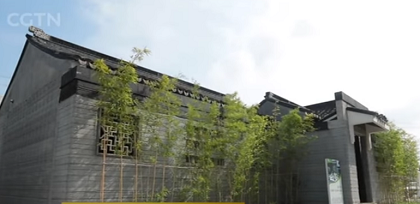
In Jiangsu Province, the company has been printing structures that embody Chinese history and culture, while providing a look into the future of creating Chinese homes, business offices and more.
The process is relatively new. It utilizes a 3D printing cement ink that combines cement, sand, and fiber together with an additive resin that allows layer by layer printing. What the company essentially created was ‘Special Glass Fiber Reinforced Cement.'
Senior Engineer at the Shanghai Research Institute of Building Sciences, Ya Beihong, told CGTN that the 3D printed material has better anti-crack properties than traditional cement. This is due to the added fibers that are pushed through the printing nozzle.
As a result, the houses should be durable, and assuage the many critics who have wondered how sturdy they would be.
Winsun first made news headlines in 2013 when they claimed to have printed 10 houses in 24 hours. Then, in 2015 they printed a six-story apartment building, which only cost US $160,000 to produce.
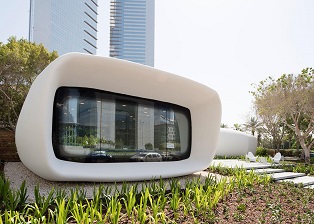
Ma Yihe, the CEO of Winsun said, "industrial waste from demolished buildings is damaging our environment, but with 3D-printing, we are able to recycle construction waste and turn it into new building materials."
Yihe says that developer costs are cut by 50 percent when buildings are 3D printed. Moreover, with robots taking care of every part of the house's fabrication, a construction crew is not technically necessary — and will be even less essential as the technology develops.
The company says they will be printing bus stations, public toilets, and affordable houses in China soon.
Winsun was the construction company behind the first 3D printed office that was printed in Dubai. The UAE is looking to rely on 3D printing buildings as a part of their 2030 mandate to have most of its construction works done via 3D printing.
The 3D printing building technique could also have positive spin-offs for the globe. If housing is a fundamental right for all humans, the printing method could create housing at a much more affordable rate for those in the world needing shelter. Every level of the construction process is digitized and ultimately futuristic.
Works Cited
About Winsun-Yingchuang Building Technique (Shanghai)Co.Ltd. (WinSun), www.winsun3d.com/En/About/.
Dubai Future Foundation. “THE OFFICE OF THE FUTURE.” 3D PRINTED OFFICE - DUBAI FUTURE FOUNDATION, www.officeofthefuture.ae/.
“Living in the Future: 3D Printing Shaping the Construction Sites of Tomorrow.” YouTube, 2 Nov. 2018, youtu.be/XEVkosH_-gQ.
- Details
- Written by: Elyse Simich
The EIT remote and virtual lab platform
The EIT lab hosting platform, Electromeet, connects students with lab computers in real time using TeamViewer software. Once connected, students will have access to a wide range of engineering software and connected hardware, which will be used in practical assessments throughout their course. Utilizing the Electromeet scheduling system, students are able to pre-book exclusive access to the required labs for when they are needed. The labs consist of:
- Virtual labs; computers hosting software for a multitude of engineering applications, including: modelling and analysis, science education, programming, power network design, construct models, design and drafting, project management, industrial process control, and virtual plant field operations.
- Remote labs; computers connected to physical equipment and sensors equivalent to the traditional university engineering lab. These practicals are interactive, controllable, variable, and viewable over webcams in real-time, with examples including; data communication and protocols, scientific instrumentation, physical experimentation, the control and observation of circuits, systems and machinery, and robotic automation.
Electromeet online lab hosting provides EIT students with on-demand access to professional engineering software and lab equipment, from anywhere in the world, subject to an internet connection. The booking and access page stipulates which software and physical equipment is available on each lab. Access is via the website: https://lab.electromeet.com/Home
EIT remote and virtual labs are hosted primarily in Perth, Australia, but additional labs are located in Johannesburg, London and Singapore. If a lab is offered in more than one of these locations, for an improved experience, EIT strongly suggests selecting the lab in the location which has the lowest latency for the student.
Demonstrable industrial experience
Embedded within the EIT Bachelor of Science and Master of Engineering curriculums is the requirement to complete 240 hours of engineering discipline-specific industrial work experience, with one or more companies, under the supervision of a professional engineer. Students are required to attend a site visit prior to independently undertaking industrial experience.
The primary objective of this requirement is to ensure that students have had the opportunity to learn about real situations in engineering practice; by working both independently, and in groups, and contributing to professional work related to their engineering specialisation in a meaningful way. Work experience may be achieved in numerous ways ranging from roles as junior members of teams, to tasks that form part of discrete engineering projects.
Through participation, observation, and engagement, students will: enhance their understanding of how organisations function, put engineering theory and concepts learned in the classroom into practice, develop their professional competencies, gain perspective on the realities of practice, and develop their judgement, innovation and problem solving skills.
In addition to understanding the company structure and activities, the student will be exposed to organisational policy and culture, interact with employees and other engineering disciplines, familiarise themselves with organisational communication procedures, and obtain insight and practical aptitude regarding projects; from the planning phase to completion.
For school leavers, the concept of networking and applying for industrial experience can be very daunting. EIT provides assistance to on-campus students in communication and presentation skills, contacting companies, arranging a site visit, and accessing a network of local engineering companies in order to meet the course requirements and pursue vacation work opportunities.
Students who already possess significant industrial experience in their engineering discipline of study may apply for recognition of prior learning to meet this requirement.
EIT also readily engages with distinguished industry guest speakers who are able to share their experiences and expertise.
Hands-on with engineering equipment and experimentation
Demonstrable practical hands-on work is a requirement of many professional engineering societies and accreditation agencies around the work and is an essential component of the EIT Bachelor of Science and Master of Engineering programs.
Whilst these programs include contextualised remote and virtual labs; equivalent to, or considerably more comprehensive than a traditional classroom-based program; it is essential to verify that students are competent in hands-on work skills, including; practical tool usage, workplace safety, physical measurement, experimentation, construction, assembly and working in an engineering team, within the context of their discipline. The workshops commence with a first aid course and each session requires students to undertake a job safety analysis. In total, there are four workshops for Bachelor’s students and five for Master’s students.
The Hands-on workshops are also conducted to provide the supplementary exposure to the course units. For example, the Hands-on Workshops cover laboratory experiments related to Physics as well as Chemistry; mechanical workshops apply theoretical concepts related to mechanisms, machines and processes; civil workshops relate to materials, surveying and construction; industrial automation workshops relate to instrumentation and controllers; and electrical workshops relate to circuits, switchgear, transformers and electrical motors. The latter workshops foster high-level technologist drafting and design skills and the Master’s workshop has engineering project teams working on a discipline-related comprehensive industrial case study.
On-campus and online students will elect to attend one of the annual workshop deliveries, at an EIT campus, but no sooner than having completed three semesters of full-time equivalent study to ensure sufficient prerequisite knowledge and skill. Subject to demand, workshops are run over four weeks in Perth and Johannesburg, commencing in January and November each year, with a fifth week for Master’s students. On-campus students may also choose to complete the initial workshops over the course of a semester.
Students who already possess significant industrial experience in their engineering discipline of study may apply for recognition of prior learning to meet this requirement. Master’s students who possess an accord-recognised undergraduate qualification are exempt from the first four workshops.
- Details
- Written by: Quintus Potgieter
Just across from EIT’s sister company in South Africa, in Waterfall City, Midrand, the largest rooftop solar photovoltaic (PV) system in the southern hemisphere has been unveiled.
If there’s one thing that South Africa doesn’t lack, it’s sunshine. Malls and other venues that keep the lights on around the clock are moving towards renewable energy to reduce their carbon footprints. It also provides a model for the country; encouraging the citizens of South Africa to dream of and plan for a future where clean energy makes up one hundred per cent of the energy mix.
Engineers from renewable energy company Solareff have fitted the Mall of Africa’s roof with a US $3.49 million photovoltaic system that will generate the necessary energy to keep the lights on.
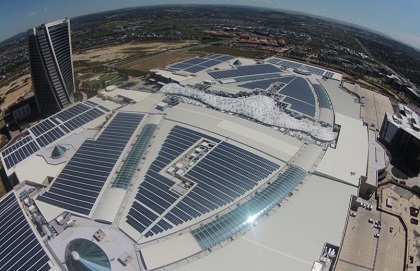
It is officially the 10th most significant photovoltaic solar setup in the world, and purportedly the world’s first mixed-use integrated solar power-diesel hybrid system.
Talking to IOL, Michael Clampett, the head of retail asset management at Attacq, the company who owns the mall, said:
“This project will see the mall producing sufficient power to support its day-to-day electricity requirements while also decreasing its overall carbon footprint, another significant point in our sustainability journey.”
It is expected to generate 7800 MWh every year. Attacq also mentioned that the system would equate to 157 fewer coal trucks on the road annually. The setup covers 4.5 hectares, taking up most of the space on the Mall’s roof. And Mall of Africa is not the only mall making the transition.
Liberty Midlands Mall in Pietermaritzburg, KwaZulu-Natal, has confirmed that they too will be using clean energy in their mall. According to eProperty, the solar plant will consist of 2,900 grid tied; roof mounted photovoltaics made out of premium Monocrystalline silicon chipped photovoltaic cells.
The system will power the mall during the hours the sun is in the sky. South African private energy companies are looking to introduce industrial-scale battery storage that would enable storage of solar energy so clean energy can be utilized around the clock.
The South African government has just announced an Integrated Resource Plan. It suggests that the government will prioritize renewable energy projects and providers.
And this is not surprising - South Africa’s state-owned utility is struggling to keep up with electricity demand. The photovoltaic system on the Mall of Africa, therefore, is particularly important as it will ensure more electricity is available for surrounding businesses and housing.
Works Cited
“Mall of Africa Just Installed the World's 10th Biggest Solar Roof - Here's What It Looks Like.” Here Is How Far Soccer Players Run during a World Cup Match, www.businessinsider.co.za/mall-of-africa-just-installed-the-worlds-10th-biggest-solar-roof-2018-9.
News, eProperty. “LOGIN.” Solar Project Set to Deliver Clean Energy to Liberty Midlands Mall - EProperty News, www.eprop.co.za/commercial-property-news/item/21331-solar-project-set-to-deliver-clean-energy-to-liberty-midlands-mall.html.
- Details
- Written by: Quintus Potgieter
How do you make a nanodevice move? Add some light. No, really.
A nanomotor is a molecular or nanoscale device capable of converting energy into movement. The motors are so small they can fit inside human cells. The benefits of engineering these kinds of motors in the future of biomedicine and robotics might be unfathomable.
The University of Texas at Austin is abuzz with the news that their mechanical engineers have — once again — achieved a breakthrough for nanotechnology.
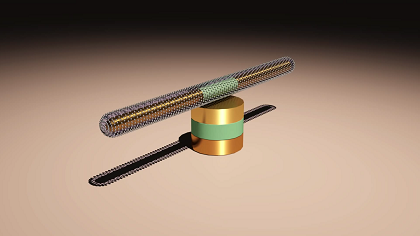
They have created a method for selecting and switching mechanical motions of nanomotors among multiple modes with visible light as the stimulus. The engineers are confident their findings can factor into the next generation of controllable nanoelectromechanical and nanorobotic devices.
The engineers liken light as a stimulus to a knob that can select the different modes of mechanical motions. The devices convert energy into movement at the cellular and molecular levels. The engineers utilized a laser for their testing.
The findings were published in the journal ‘Science Advances’ with the title: ‘Visible light-gated reconfigurable rotary actuation of electrical nanomotors’ Utilizing light the engineers succeeded in acceleration rotations of nanomotors, stopping rotation of nanomotors, and the reversal of rotation of nanomotors.
Donglei Fan, associate professor at the Cockrell School of Engineering’s Department of Mechanical Engineering and lead author on the project told UT News:
“The ability to alter the behavior of nanodevices in this way - from passive to active - opens the door to the design of autonomous and intelligent machines at nanoscale. We successfully tested our hypothesis based on the newly discovered effect through a practical application. We were able to distinguish semiconductor and metal nanomaterials just by observing their different mechanical motions in response to light with a conventional microscope. This distinction was made in a noncontact and nondestructive manner compared to the prevailing destructive contact-based electric measurements.”
This was not the first time the team made giant strides forward with nanomotors. In 2014, the team designed the smallest and fastest nanomotors. Their latest experiment included utilizing the light sources, an electric field and semiconductor nanoparticles in a water-based solution.
Works Cited
“First-Ever Method for Controlling Nanomotors Is Developed by UT Engineers.” UT News | The University of Texas at Austin, 18 Sept. 2018, news.utexas.edu/2018/09/18/ut-engineers-develop-first-method-for-controlling-nanomotors.
- Details
- Written by: Quintus Potgieter
A recently formed civil engineering company, the Boring Company, is planning to further tunneling and tunnel mechanics. The CEO happens to be the hotly debated Elon Musk.
He has been inspired by the challenges of the Los Angeles transport infrastructure and believes that with California famously splayed across the San Andreas Fault, tunnels would survive an earthquake.
However, a journal published by Springer points out that for tunnels to be completely safe from earthquakes, they have to be as deeply embedded in the ground as possible. An excerpt reads:
“Experience shows that underground structures, especially deep ones, are far less vulnerable to earthquakes than superficial ones. The earthquake waves can also be amplified within soft superficial strata. In addition, loose water-saturated soil may lose its strength (so-called liquefaction), and this can lead to landslides or failure of foundations and retaining walls.”
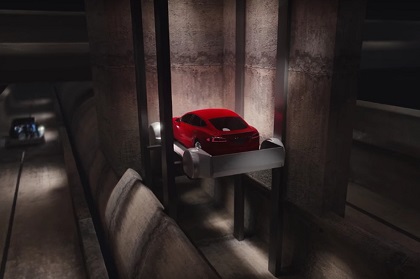
So going deeper is better. And aside from the already established underground subway system, the big question is what else we could be routed underground?
Elon Musk is determined that Los Angeles’ traffic congestion would be solved with tunnels. Talking on Joe Rogan’s podcast, the Joe Rogan Experience, Musk says:
“I’ve lived in LA for sixteen years and the traffic has always been terrible. I don’t see any other ideas for improving the situation. So, we are going to build a tunnel. And, maybe it will be successful but maybe it won’t.”
The probability of success has not stopped Musk from testing how useful his underground tunnels might be. The Boring Company recently suggested that they could make access to iconic venues much more accessible than they already are. People who are going to stadiums to watch sport or their favorite musician perform are usually in a bit of traffic outside of the venue.
The Boring Company published a proposed tunnel construction from Los Feliz, East Hollywood to Dodger Stadium in the City of Los Angeles.
Musk reiterated on the podcast that the tunnels are earthquake-proof, whereas above-ground roads can experience a high level of damage during an earthquake.
“Tunnels are very safe in earthquakes. Earthquakes are essentially a surface phenomenon. It’s like waves on the ocean. So, if there’s a storm, you want to be in a submarine. The way a tunnel is constructed - it’s constructed out of these interlocking segments, kind of like a snake. It’s sort of like a snake exoskeleton with double seals.
Trelleborg Infrastructure has uploaded a video, on YouTube, of how robust of an immersed tunnel can be. It is created with Gina gaskets and Omega seals. In the video, an earthquake is simulated displaying how pliable an immersed tunnel is. It also shows that the tunnel retains its structural integrity:
This corroborates what Musk was saying, when he told Rogan:
“And so, even when the ground moves, the tunnel is actually able to shift along with the ground - like an underground snake. And, it doesn’t crack or break, and it’s extremely unlikely that both seals would be broken. And, it’s capable of taking five atmospheres of pressure. It’s water-proof, methane-proof, or gas proof of any kind. It meets all California seismic requirements.”
Skepticism
Musk’s tunneling ideas have been met with some skepticism and with the need for an environmental impact analysis the project is likely to be delayed for quite some time.
Joshua Schank, the leader of Metro’s Office of Extraordinary Innovation talking to Curbed Los Angeles said:
“Technology doesn’t take precedence over the environmental process. You can have the fastest tunneling machines and the greatest mode of transport, but none of that affects the political or environmental process.”
Nonetheless, assuming Musk’s underground tunnels are given the green light, he may be missing the thumbs up from property owners across California. The associate director of UCLA Lewis Center and the Institute of Transportation Studies, talking to Curbed LA said:
“The best way to do this would be to negotiate with the state of California and build it under the freeway system. But those roads are built for 65mph, not more than 100, and you’re going to need to take wider turns. Inevitably it’ll go under private property and all it takes is one person’s refusal before you have to re-engineer everything.”
Musk may be banking on the fact that the science is there, together with the fact that the tunnels may just solve an oncoming congestion crisis.
Furthermore, Musk believes that transport systems should consider a three-dimensional approach. He said:
“If you can go 3D on your transport system, then you can solve all traffic. You can either go 3D up with a flying car, or 3D down with tunnels. You can have as many tunnel levels as you want. You can arbitrarily relieve any traffic.”
Musk concludes that if you go down deep enough you could create 100 tunnels, thus solving a congestion issue on the surface. Whether or not the Boring Company will be given clearance to go ahead and create what they are envisioning is a moot point, but the fact that engineers are dreaming about the future is positive.
Works Cited
“Earthquake Effects on Tunnels.” SpringerLink, Springer, link.springer.com/chapter/10.1007/3-540-28500-8_18.
“Joe Rogan Experience #1169 - Elon Musk.” YouTube, 7 Sept. 2018, youtu.be/ycPr5-27vSI.
Tinoco, Matt. “5 Reasons Why Experts Are so Skeptical of Elon Musk's Solution for LA Traffic.” Curbed LA, Curbed LA, 18 Dec. 2017, la.curbed.com/2017/12/18/16748436/elon-musk-tunnels-los-angeles-criticism-explained.
- Details
- Written by: Quintus Potgieter
Civil engineering is in an era of transformation. Traditional methods of site surveying are changing and are becoming more informed by technologies.
Drone technology is assisting many different industries in the built environment to become more cognizant of studying the big picture. Drones can now monitor places from a heightened position, offering engineers further insight into the projects they are involved with.
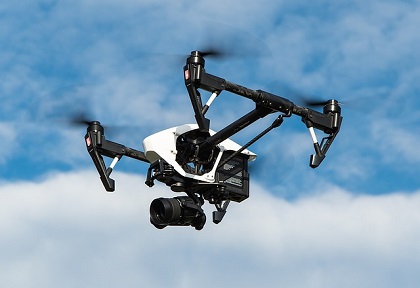
The Independent featured Lamberto Frescobaldi in an article about drone technology. He is the head of a 700-year-old Tuscan vineyard, which is undergoing a new construction project. The site is being monitored from above by drone technology, to help engineers keep an eye on the whole construction process.
The drone data can help the engineers make decisions on-the-fly, more accurately than they would have without the technology. Drone technology can help engineers mitigate equipment failure. It can also assist in general surveillance of the construction site, which is a huge plus for engineers.
New research published by Frost & Sullivan indicates that the implementation of drone technology at construction sites around the world is not slowing down. This research is entitled ‘Global Digital Transformation on the Building and Construction Sector, Forecast to 2025’.
The authors warn that a failure to adopt digital transformation will result in inefficient construction projects. Companies that don't adapt may be surpassed by those who are implementing these newer technologies into their projects. An excerpt from the report reads:
“Despite the increasing availability of digital solutions, the industry has to overcome the challenge of rolling out technology across multiple sites, subsectors, and stakeholders. The way forward will be a platform that promotes interoperability. The regulatory framework has to be strengthened as well and the overall perception of industry stakeholders has to be debunked to enhance awareness and the willingness to invest in this digital transformation journey.”
Another overlooked benefit of the drone technology is the safety of on-site personnel. For example, when skyscrapers are being constructed, fewer workers would need to be hoisted up for external surveying. Instead, inspectors could examine the drone footage.
For the higher-ups of engineering companies, the benefits are even clearer. Mike Winn, the chief executive of drone company DroneDeploy, told the Independent:
“The head office can see what’s going on, and the safety team, the costing team, the designers - all of them can contribute to the project, share data and comment on it, without actually going to the job.”
Consequently, construction companies and engineers who do not familiarize themselves with the digital transformation occurring in the industry risk not being able to level up when the majority of companies transform. The uses of drone technology in the construction sector are growing every year — making construction sites more efficient, safer, interconnected, and far removed from what they were in the past.
Works Cited
Madigan, Nick. “How Drones Are Revolutionising Construction and Real Estate.” The Independent, Independent Digital News and Media, 1 Sept. 2018, www.independent.co.uk/life-style/design/drones-revolutionising-construction-real-estate-how-architecture-a8512021.html.
ltd, Research and Markets. “Global Digital Transformation on the Building and Construction Sector, Forecast to 2025.” Research and Markets - Market Research Reports - Welcome, www.researchandmarkets.com/research/htcjm2/global_digital?w=5.
- Details
- Written by: Quintus Potgieter
The 4D printing era has officially arrived.
Four-dimensional printing is characterized by a 3D printed object's ability to change shape.
Mechanical engineering researchers at City University of Hong Kong believe they have developed a world-first. They are debuting a ‘ceramic ink' for 3D printers. This means a mixture of elastic polymers and ceramic nanoparticles can be passed through a printer. The object that is produced is then able to be molded into any shape. The researchers published their findings in the Science Advances journal.
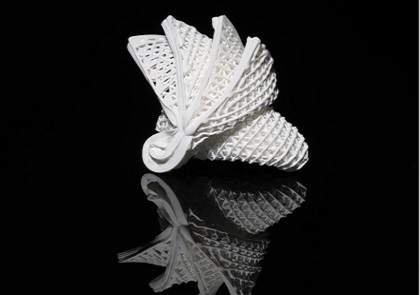
Previously, printing with ceramic-based resins produced rigid structures that couldn't change shape. However, this new ceramic ink allows for the production of malleable shapes, similar to origami structures. This signals further evidence of the origami movement that's occurring within the mechanical engineering sector. The title of the research the engineers published was: “Origami and 4D printing of elastomer-derived ceramic structures.”
The ceramic precursors can be ‘stretched three times beyond their initial length' when heated up during the printing process, according to the researchers. Professor Lu Jian, the Chair Professor at CityU's Mechanical Engineering Department — who spearheaded the research — told reporters:
"With the versatile shape-morphing capability of the printed ceramic precursors, its application can be huge. One promising application is electronics. Ceramic materials have much better performance in transmitting electromagnetic signals than metallic materials. With the arrival of 5G networks, ceramic products will play a more important role in the manufacture of electronic products."
The researchers are also confident that there could be impressive aerospace applications in the future. The researchers believe this new process will begin a new chapter of cost-efficient 3D printing with flexible structures.
Works Cited
EurekAlert. “CityU Develops the World's First-Ever 4D Printing for Ceramics.” EurekAlert!, www.eurekalert.org/pub_releases/2018-08/cuoh-cdt081518.php.
“The World's First 4D Printed Ceramics Take Shape Thanks a Team of Mechanical Engineers.” Interesting Engineering, 19 Aug. 2018, interestingengineering.com/the-worlds-first-4d-printed-ceramics-take-shape-thanks-to-a-team-of-mechanical-engineers.
